


















































































































































































































































































































































































































































































































































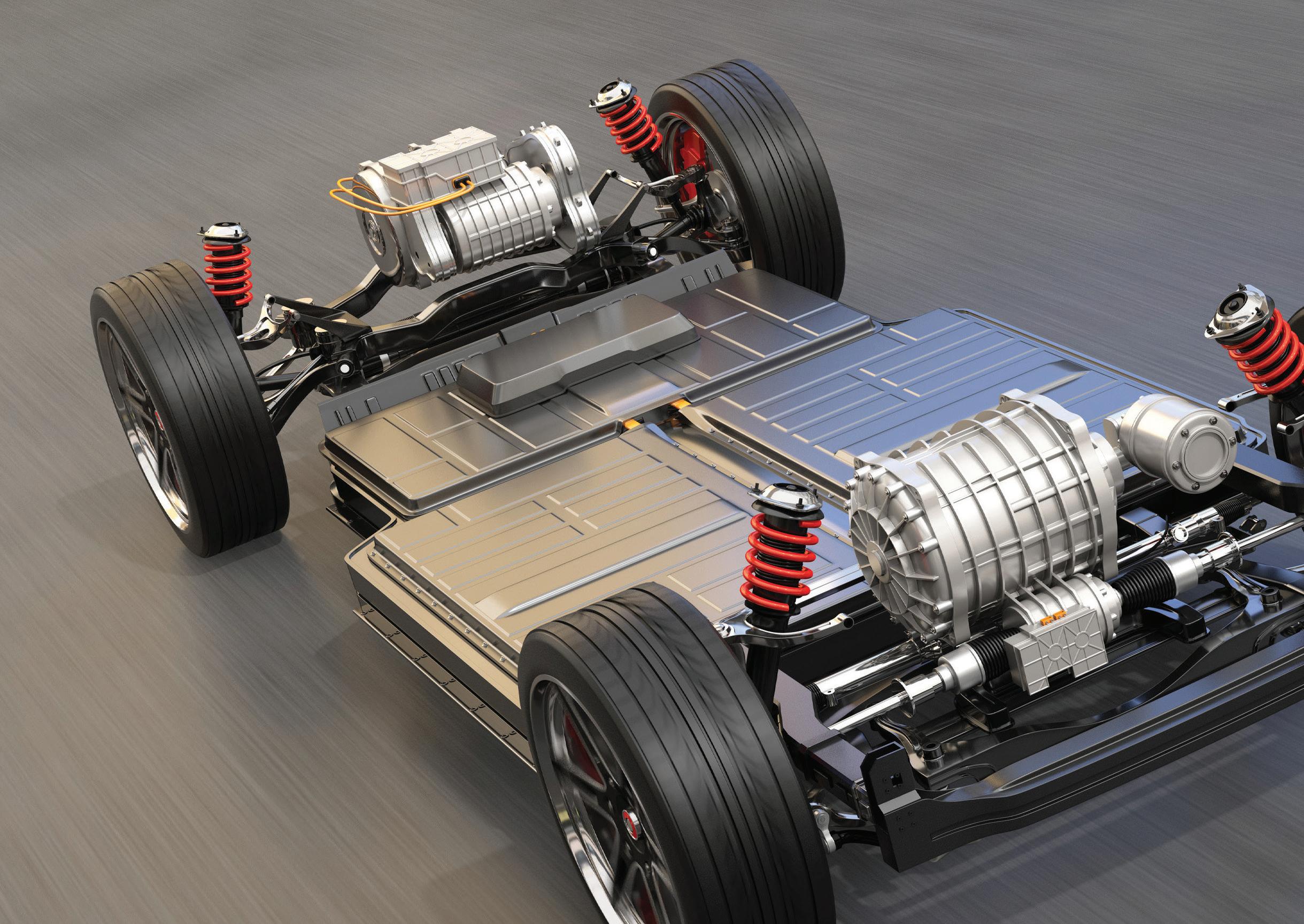

Battery cell, module and pack level charge/discharge cycle testing solutions designed to provide high accuracy measurement with advanced features. Regenerative systems recycle energy sourced by the battery back to the channels in the system or to the grid.
Battery simulation for testing battery connected devices in all applications to confirm if the device under test in performing as intended. Battery state is simulated which eliminates waiting for the charge/discharge of an actual battery. Real time test results include voltage, current, power, SOC%, charge/discharge state and capacity.
To learn more about our Battery Test Solutions visit chromausa.com







CEO Mark Gresser on America’s booming battery manufacturing industry

Vector Group acquires vehicle measurement tech manufacturer CSM
Webasto boosts energy capacity of its battery system for commercial EVs
Nexperia to invest $200 million at its semiconductor factory in Germany
Cooper Standard’s new eCoFlow Switch Pump simplifies EV thermal management
ABB launches energy-efficient motor and inverter package for electric buses
Eaton introduces 48 V DC-DC converter for off-highway EVs


Microchip offers new on-board charger package of automotive-qualified devices
Asahi Kasei Microdevices completes proof of concept for eFuse in 800 V EVs
Tecman announces new anti-thermal propagation battery technology
Donaldson’s new Dual-Stage Jet battery vent provides higher degassing rates
Sakuu and SK On to industrialize dry-process battery manufacturing
ZF introduces TraXon 2 Hybrid transmission
EMS acquires micro-component specialist Thin Metal Parts
Evonik’s new fire-resistant coatings for EV battery housings


Silicon Mobility introduces single-chip solution for integrated powertrain
HUBER+SUHNER’s new modular cable assemblies speed up production
Harbinger announces $400 million in electric truck pre-orders
First Student receives $200 million in funding for electric school buses


Yanmar debuts fully electric trio: excavator, wheel loader and tracked carrier
Komatsu debuts battery-electric small-class bolter and jumbo drill
Kramer-Werke’s new 5065e electric wheel loader
APM Terminals to pilot electric terminal tractors at New Jersey port
South Pasadena, California completely electrifies its police fleet
Rio Tinto and BHP to test battery-electric haul trucks in Australia
American Airlines signs agreement for 100 hydrogen-powered engines
Einride orders 150 Peterbilt 579EV electric semi tractors for its US fleet
Blue Bird debuts electric step van
Mullen introduces BEV version of PowerUP mobile EV charging truck
Volvo’s electric trucks have driven 80 million km in 5 years
Mercedes-Benz USA expands 2025 eSprinter options
Singapore concrete company unveils electric-powered concrete mixer truck
Amazon adds Volvo electric drayage trucks to its EV fleet
Belgian transit agency awards agreement for 100 electric buses to Irizar
FedEx orders 150 Shyft Blue Arc electric trucks
Volvo, ZF, Cummins win $441 million to accelerate heavy-duty EV production




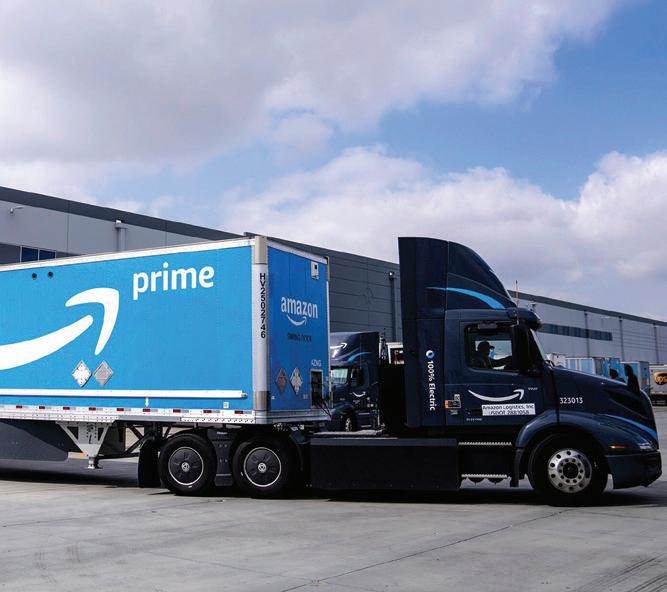


Q&A
Irdeto’s cryptographic keys and certificates help keep charging communications secure.


CharIN unveils OPNC protocol to enable supplier-agnostic Plug & Charge
IoTecha wins $27-million grant for grid-friendly EV charging in California
Toyota joins US public EV charging network IONNA
Shell opens megawatt charger for electric trucks and boats in Amsterdam
FLO secures $136 million for North American charging network expansion
Daimler Buses and ESWE Verkehr open electric bus depot with 120 chargers
Wallbox debuts small-footprint Supernova 220 wall charger
ChargePoint has secured 125 NEVI awards to fund EV fast charging sites
ABB E-mobility’s new A400 All-in-One charger is designed for reliability
Volvo launches off-grid chargers for fast charging large equipment onsite
Kempower opens production facility in North Carolina
ChargeTronix launches 480 kW charger for electric truck fleets
Paired Power launches microgrid solar charger and battery storage solution
Sixt rental car uses Guided Energy to streamline charging operations
Sunrun launches V2H pilot using Ford F-150 Lightning electric trucks
Emobi and Autocrypt collaborate to make Plug & Charge more secure








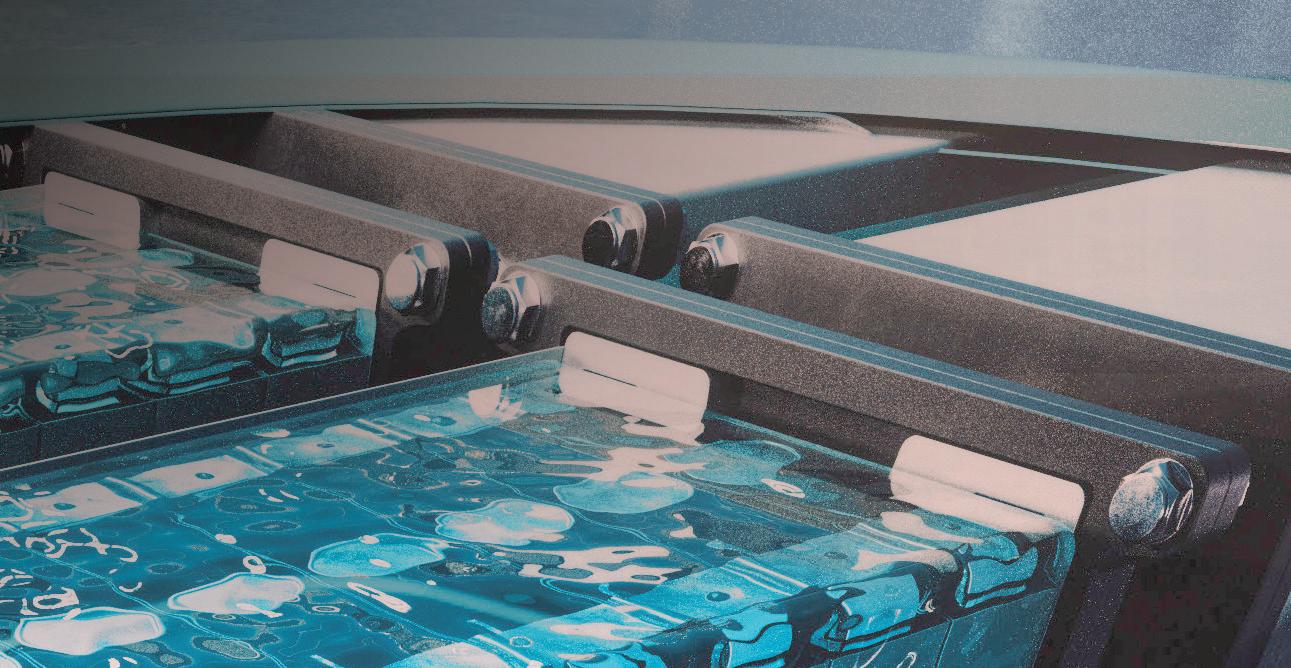







































Electric vehicles (EVs) are the way of the future but manufacturing them to scale requires next-gen materials that can meet their complex electrical, chemical, and thermal requirements. Chemours™ advanced materials improve EV performance throughout multiple applications:








Fluoropolymers: The
High performance in extreme temperatures
Resistant to chemicals
Superior dielectric properties
Low friction
chemours.com/EV7
Thermal stability
Non-permeability
Sustainable and nonhazardous
Durability extends component life
Publisher Senior Editor
Technology Editor
Segment Leaders
Christian Ruoff
Charles Morris
Jeffrey Jenkins
Joel Franke
Mark Rogers
Greg Schulz
Graphic Designers
Tomislav Vrdoljak
Contributing Writers
Jeffrey Jenkins
Charles Morris
Christian Ruoff
John Voelcker
Cover Image Courtesy of
Chevrolet
For Letters to the Editor, Article Submissions, & Advertising Inquiries Contact: Info@ChargedEVs.com
Special Thanks to
Kelly Ruoff
Sebastien Bourgeois
ETHICS STATEMENT AND COVERAGE POLICY

AS THE LEADING EV INDUSTRY PUBLICATION, CHARGED ELECTRIC VEHICLES MAGAZINE OFTEN COVERS, AND ACCEPTS CONTRIBUTIONS FROM, COMPANIES THAT ADVERTISE IN OUR MEDIA PORTFOLIO. HOWEVER, THE CONTENT WE CHOOSE TO PUBLISH PASSES ONLY TWO TESTS: (1) TO THE BEST OF OUR KNOWLEDGE THE INFORMATION IS ACCURATE, AND (2) IT MEETS THE INTERESTS OF OUR READERSHIP. WE DO NOT ACCEPT PAYMENT FOR EDITORIAL CONTENT, AND THE OPINIONS EXPRESSED BY OUR EDITORS AND WRITERS ARE IN NO WAY AFFECTED BY A COMPANY’S PAST, CURRENT, OR POTENTIAL ADVERTISEMENTS. FURTHERMORE, WE OFTEN ACCEPT ARTICLES AUTHORED BY “INDUSTRY INSIDERS,” IN WHICH CASE THE AUTHOR’S CURRENT EMPLOYMENT, OR RELATIONSHIP TO THE EV INDUSTRY, IS CLEARLY CITED. IF YOU DISAGREE WITH ANY OPINION EXPRESSED IN THE CHARGED MEDIA PORTFOLIO AND/OR WISH TO WRITE ABOUT YOUR PARTICULAR VIEW OF THE INDUSTRY, PLEASE CONTACT US AT CONTENT@CHARGEDEVS.COM. REPRINTING IN WHOLE OR PART IS FORBIDDEN EXPECT BY PERMISSION OF CHARGED ELECTRIC VEHICLES MAGAZINE.


Hall9–Booth622 Nuremberg|11-13June2024
















The new CXT-ICM3SA series of Inverter Control Modules forms the heart of CISSOID’s modular inverter platform, leveraging the ultra-fast OLEA® T222 Field Programmable Control Unit by Silicon Mobility.
Based on CISSOID’s CXT-PLA3S series of Intelligent Power Modules and HADES2 gate driver chipset, they are supporting the OLEA® APP - T222 INVERTER software for fast development of electric motor drive trains.
• 3-phase 1200V 340-550A SiC power module

Integrated gate driver board
Dual ARM® Cortex-R5F in lockstep

Advanced Motor Event Control (AMEC®) unit






Real-time actuator & sensor control and processing T222 processor & software ISO26262 ASIL-D and AUTOSAR 4.3 certified





2024 is shaping up to be a momentous year for the EV industry. ere’s so much going on, it’s hard to keep up. I know, we say this every year, but make no mistake—the global EV market is going to look very di erent in 2025 than it did at the dawn of 2024. As EVs begin to move from the early adopter phase into the mass market, the balance of power among automakers, and among automaking countries, is shi ing—and quickly.
Chinese automakers are now exporting EVs that are just as good as Western models, at prices none of our companies can hope to match. Will the sti new tari s announced by the US and Europe buy domestic automakers time to raise their electric games, or will the additional protection from competition simply allow them to continue hitting the snooze button? We shall see. Meanwhile, Chinese EVs are pouring into secondary markets ( ailand, Mexico, South America et al), threatening a reckoning for Toyota, which has long dominated many of these markets, but now has few EVs to o er.
It’s rare for a company that leads one wave of technological innovation to remain in a leading position in the next wave. e company that almost singlehandedly created the modern EV market, Tesla, is seeing its market share erode, and its innovation engine seems to have stalled. Legacy truck companies (Daimler, Volvo) have beaten it to the commercial market, and instead of focusing on the aching need for budget-priced consumer EVs, its leadership seems to be shi ing its focus to non-automotive pursuits (robots, AI, political distractions).


Ford and GM, obsessed with quarterly pro ts, seem to roll back EV production plans every time there’s a slight dip in sales, and their constant trumpeting that their EVs aren’t pro table is unproductive, at best. Meanwhile, Hyundai, whose Ioniqs are winning impressive awards, safety ratings and sales, seems fully committed (and pro table). Kia’s a ordable, long-range EV models are delighting buyers—US sales doubled in the rst half of the year. Which company would you rather buy your next EV from?
On the other hand, GM has its new Ultium platform back on track, and is ramping up production of several new models, including a moderately-priced (below $40k) electric SUV that could be just what the US market has been waiting for. Read John Voelcker’s review of the Equinox EV in this issue, page 48.
On the commercial side, big things are brewing. Drayage eets in California are plugging in, as WattEV and others are building out massive charging hubs.
e new Megawatt Charging Standard is entering the commercial phase—as MCS implementation spreads, so will electric trucking.
And that’s far from the only development on the infrastructure front. Widespread adoption of SAE J3400 (formerly NACS) and the new Plug & Charge feature are making public charging more convenient—and also raising new standardization and security challenges (see our feature articles on charging consortium CharIN, page 66, and cybersecurity specialist Irdeto, page 74).
Curbside charging is now widespread in European cities, and it’s coming to the US. is will make EV adoption practical for millions more city dwellers (see Charles Morris’s Charging Forward column, page 82).
Away from the headlines, o -road vehicles and equipment in the mining, construction and agricultural sectors are rapidly going electric. You’ll be seeing a lot more coverage of this market segment in Charged.
Christian Ruoff | Publisher EVs are here. Try to keep up.


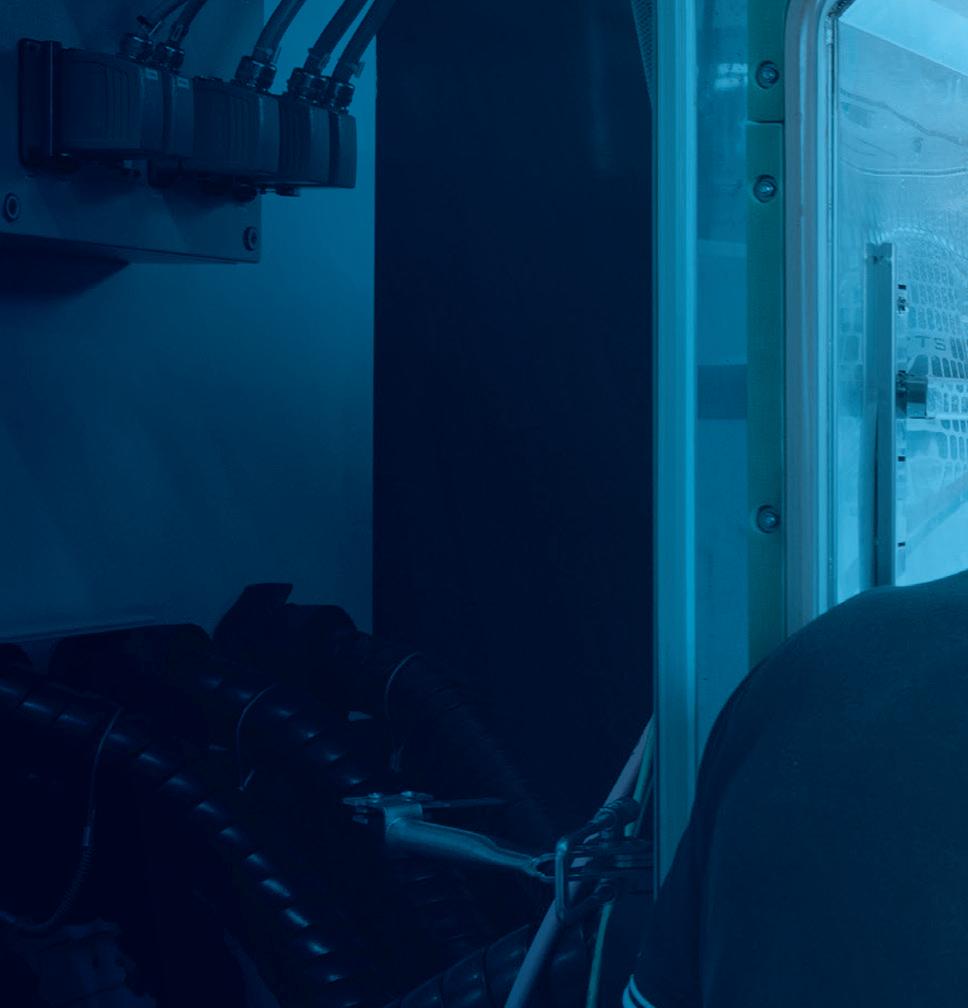











































CSM Computer-Systeme-Messtechnik, a manufacturer of networked measurement technology and data loggers for vehicles and test benches, has been acquired by soware specialist Vector Informatik.
Since 1983, CSM has been developing solutions for acquiring a wide range of analog values. e company has more than 100 employees at its headquarters in Filderstadt, near Stuttgart, and at international branches, including an independent team in Auburn Hills, Michigan.
Vector employs over 4,500 people at its headquarters in Stuttgart, and at branches in Brazil, the US, the UK, Japan, India, China and South Korea, among others. e two companies have been working together since 2015 to deliver hardware and so ware solutions for measurement technology applications. CSM will continue its business activities independently.
“ e many years of successful cooperation have shown that Vector and CSM can combine their respective expertise to provide our customers with robust and future-proof measurement technology,” said Dr. Stefan Krauß, CSM’s new Managing Director. “We want to meet future challenges, especially in e-mobility, with further tailor-made developments.”

As part of a product update, German automotive supplier Webasto has increased the energy capacity of its traction batteries from 35 to 40 kWh. e new Standard Battery Pro 40 is the same size as its predecessor (960 x 687 x 302 mm), allowing it to t seamlessly into installation spaces that already use the previous Webasto standard battery system.
e Standard Battery Pro 40 is protected by a robust aluminum housing, and can be integrated vertically or horizontally into vehicles to o er manufacturers maximum freedom during installation. e high-voltage battery works with the Webasto eBTM thermal management solution, which keeps traction batteries within the ideal temperature range regardless of the outside temperature. A series of sensors continuously monitor the battery temperature, and fuses and other protective mechanisms take immediate e ect in the event of a malfunction.
e new Standard Battery Pro 40 meets the requirements of ECE R100 and R10, the CE speci cations for selected mobile machinery, and a range of safety standards, including ISO 6469, ISO 19014 and ISO 26262 (ASIL level C). It is protected against the ingress of dust and water in accordance with IP67.
Webasto develops and produces both the control electronics and the battery at its German sites in Schaidt, Schierling and Stockdorf.




Dutch semiconductor manufacturer Nexperia plans to invest $200 million to develop the next generation of wide bandgap (WBG) silicon carbide (SiC) and gallium nitride (GaN) semiconductors, and to build production infrastructure at its facility in Hamburg, Germany. Wafer fab capacity for silicon (Si) diodes and transistors will also be increased.
SiC and GaN semiconductors enable energy-intensive applications like data centers to operate e ciently, and are key components for applications in renewable energy and electromobility, says Nexperia. To meet the growing long-term demand, production of high-voltage GaN D-Mode transistors and SiC diodes started in June 2024, and plans call for new production lines for SiC MOSFETs and GaN HEMTs. Automation of the existing
With the rise of hybrid and electric vehicles, the automotive industry is undergoing an unprecedented shift marked by significant engineering and design changes.
At Shell, we are supporting this transformation by working in close technical partnership with equipment manufacturers to develop a range of fluids specifically for high-tech hybrid and EV powertrains.

infrastructure and increased silicon production capacity by converting to 200 mm wafers will be followed by expansion of the clean room areas and construction of R&D labs.
“SiC and GaN are by no means new territory for Nexperia,” said Stefan Tilger, CFO and Managing Director at Nexperia Germany. “GaN FETs have been part of our portfolio since 2019, and in 2023 we expanded our range of products to include SiC diodes and SiC MOSFETs, the latter in collaboration with Mitsubishi Electric.”



















Michigan-headquartered Cooper Standard, a global supplier of sealing and uid handling systems and components, recently debuted the rst member of its new eCoFlow product line.

e eCoFlow Switch Pump, created in partnership with the Saleri Group, o ers features of both an electric water pump and electrically driven valve in a single integrated coolant control module. is scalable uid control technology enables uid ow switching, splitting and regulating—features that are needed to address the complex glycol thermal management needs of electric and hybrid vehicles. e combination of water pump and valve functions o ers automakers e ciency improvements, part consolidation, electrical wire harness reduction and reduced packaging space, Cooper says.
As Cooper explains, by reducing complexity, the eCoFlow system enhances the thermal management system’s e ciency by eliminating the pressure drop and waste encountered from traditional pumps and valves. e eCoFlow system also provides smoother transitions in ow to help avoid pressure pulsations and spikes that can lead to system noise. A single electrical connection manages the system’s pumping and uid control functions, eliminating the need for additional connectors, wire harnesses and vehicle input/output channels. According to the company, the eCoFlow system requires approximately half the space of the traditional components it replaces.
“Our eCoFlow Switch Pump enables customers to reduce the complexity of the thermal management system within their vehicles while improving overall system e ciency,” said Chris Couch, President, Fluid Handling Systems and Chief Technology O cer.

Swedish-Swiss electrical equipment maker ABB has launched a motor and inverter package tailored to electric buses.
e AMXE250 motor and HES580 three-level inverter were developed together to maximize e ciency, o ering up to 12% less motor losses on typical drive cycles compared to previous two-level inverters, according to the company. Unlike two-level inverters, which switch between DC+ and DC- voltage levels, the HES580 introduces a third, neutral voltage step. is e ectively halves the voltage step during each switching operation, resulting in reduced current ripple and subsequently lower harmonic losses.
e inverter extends the lifespan and enhances the reliability of the AMXE250 motor by mitigating harmonic e ects and minimizing stress on motor windings. e AMXE250 is a compact, permanent magnet synchronous motor designed for high-e ciency propulsion. It o ers high torque density for improved dynamic performance, as well as quieter operation for increased passenger comfort.
e HES580 and AMXE250 have been designed to o er exibility, so they can be placed further away from each other to provide operators with the possibility to further optimize space.
“ e motor-inverter package has been designed to work in perfect harmony, and will bring signi cant energy e ciency gains for operators and OEMs alike,” said David Segbers, Global Product Manager at ABB’s Traction Division.




Power management company Eaton has introduced a higher-capacity version of its 48 V DC-DC converter. e new converter has up to 40 A of output current capacity, and is intended for installation in on- and o -highway vehicles. It is hardened for use in harsh environments, features an air-cooled design utilizing natural convection, and can operate at ambient temperatures up to 185° F (85° C).
“ ese are environmental extremes with adverse conditions, shock and vibration that require robust protection features,” noted Ben Karrer, Head of Engineering for



See our solutions in action at the Battery Show Europe 2024
June 18-20, 2024
Messe Stuttgart, Stuttgart, Germany
Low Voltage and Power Conversion at Eaton’s Mobility Group.
e new equipment will reduce weight and save space, according to the company.

e converters step down power from a 48 V system to 12 V to provide power to accessory equipment. ey support the Controller Area Network (CAN) bus speci cation, which allows the converters to communicate with other electronic vehicle controls.
“Microchip established an e-mobility megatrend team with dedicated resources to support this growing market, so in addition to providing the control, gate drive and power stage for an OBC, we can also provide customers with connectivity, timing, sensors, memory and security solutions,” said Joe omsen, VP of Microchip’s digital signal controller business unit.

















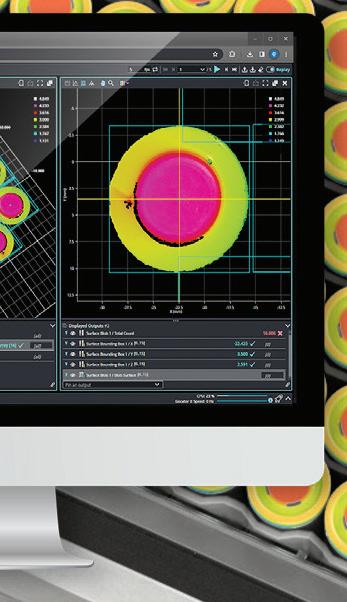


Microchip Technology is o ering an on-board charger (OBC) package designed to help developers speed their time to market by using key technologies from one supplier, including the control, gate drive and power stage.
e package uses a selection of Microchip’s automotive-quali ed digital, analog, connectivity and power devices, including the dsPIC33C Digital Signal Controller (DSC), the MCP14C1 isolated SiC gate driver and mSiC MOSFETs, in an industry-standard D2PAK-7L XL package.
To accelerate system development and testing, Microchip o ers a exible programmable solution with readyto-use so ware modules for Power Factor Correction (PFC), DC-DC conversion, communication and diagnostic algorithms. e so ware modules in the dsPIC33 DSC are designed to optimize performance, e ciency and reliability, while o ering exibility for customization and adaptation to speci c OEM requirements.
“Microchip established an e-mobility megatrend team with dedicated resources to support this growing market, so in addition to providing the control, gate drive and power stage for an OBC, we can also provide customers with connectivity, timing, sensors, memory and security solutions,” said Joe omsen, VP of Microchip’s digital signal controller business unit.

Japan-based Asahi Kasei Microdevices (AKM) and Silicon Austria Labs (SAL), a European research center for electronics and soware-based systems research, have completed a joint proof of concept of AKM’s eFuse technology in high-voltage applications using silicon carbide-based power devices.
e growing use of power devices based on silicon carbide (SiC) and gallium nitride (GaN) in EVs and other high-voltage applications makes it necessary to replace mechanical fuses—which have been used with conventional silicon-based power converters—to immediately shut down the system when detecting an overcurrent to protect devices and avoid costly maintenance.
e eFuse system provides the overcurrent and short-circuit protection required for next-generation high-voltage EV systems with SiC- and GaN-based power devices, such as on-board chargers. AKM is producing the CZ39, a coreless current sensor with a response time of 100 ns. Its fast-response capability and high accuracy allow for precise detection of overcurrent and quick system shutdown. e sensor can also e ciently regulate the current in connected subsystems, reducing the overall part count.
“We expect that the eFuse technology will contribute to smaller and lighter EV onboard chargers,” said Toshinori Takatsuka, General Manager of AKM’s current sensor business.
“By utilizing the latest AKM current sensing technologies, we can improve the reaction time of eFuses and the protection of wide-bandgap power converters,” said omas Langbauer, Team Lead within the Power Electronics Division at SAL.






Tecman Advanced Material Engineers, a unit of the Tecman Group, has signed new distribution arrangements for its anti-thermal propagation (ATP) technology.
e technology is designed to enhance cell life and optimize cell performance while simultaneously increasing the thermal propagation delay to over 20 minutes.
As the EV market continues to grow, “the time is now right to expand our European presence even further and build more direct relationships both in Germany and the wider EU,” said Kevin Porter, the company’s Managing Director.
e company is now making its framed and encapsulated ATP pads available directly to European companies that integrate the pads into their EV battery packs.
“Framed ATP pads are an advanced thermal cell barrier that incorporates a physical built-in spacer surrounding the thermal insulation pad, providing

optimum space between cells and enabling the mechanical properties of the insulation material to absorb cell expansion,” the company said. While framed pads are most suitable for prismatic battery cells, encapsulated ATP pads are designed for pouch and solid-state battery cells.


























































































































Donaldson’s new Dual-Stage Jet is a battery vent designed to provide enhanced pressure equalization and ingress protection under normal operating conditions to allow gases to escape at rates of approximately 100 liters/second at 100 mbar when necessary. According to Donaldson, the new system is so e cient, it can reduce the number of vents required on a battery pack by up to 90%.

“Customers were telling us that they needed even higher degassing rates than what was available on the market, so the Donaldson Vehicle Electri cation Development engineering team came up with a unique, creative design that allows poppet and cap can be jettisoned to instantly produce a much larger opening for gas to escape and help mitigate thermal runaway,” explains Shane Campbell, Product Manager for Vehicle Electri cation at Donaldson. “ e pressure then rapidly decreases inside the pack, greatly reducing the risk of damage to additional cells and giving occupants extra time to escape from the vehicle.”
e Dual-Stage Jet is available in two distinct con gurations—screw-in/bolt-on or with quarter-turn bayonet ttings. Agricultural and other heavy-duty vehicle manufacturers are likely to choose the former, which can o er more exibility for use in bulkier battery packs, whereas the lighter bayonet ttings are suitable for the automotive sector, and provide clear haptic feedback of proper installation.
“ e option of multiple attachment methods is important to our customers, who want something that integrates really easily with their existing pack, and with application engineers all over the globe, we’re located near the OEM wherever they may be,” says Matt Goode, Engineering Manager for Vehicle Electri cation Development at Donaldson.

Sakuu, a provider of commercial-scale equipment and technologies to the battery manufacturing industry, has announced a joint development agreement (JDA) with EV battery manufacturer SK On. Central to the agreement is the industrialization of Sakuu’s dry-process Kavian platform.
Sakuu says its dry-process manufacturing, together with its electrode printing technology, eliminates the use of solvents and enables the use of new processes in battery manufacturing that will enable cost-e ective, higher performance batteries that are also environmentally friendly.
SK On currently operates two EV battery plants in Commerce, Georgia, and is constructing additional EV battery plants in the US through joint ventures with Ford and Hyundai.
“We are pleased to announce this strategic partnership with Sakuu,” said Dr. Rhee Jang-weon, Chief Technology O cer of SK On. “We look forward to working closely with Sakuu to accelerate innovations in the manufacturing processes for EV battery electrodes.”
“Together, SK On and Sakuu are ushering in a new era in battery manufacturing technology, advancing safety, sustainability and innovation in battery technology,” said Robert Bagheri, founder and CEO of Sakuu. “With Sakuu’s pioneering technology and SK On’s best-in-class EV battery manufacturing expertise, we’re addressing the core issues facing battery makers today.”




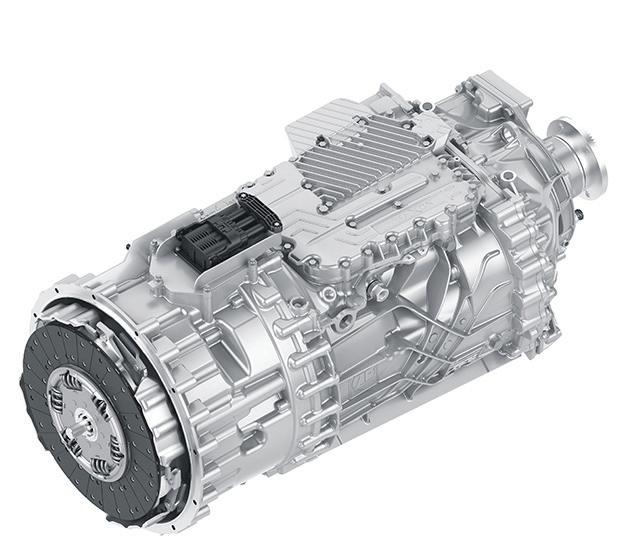
e Commercial Vehicles Solutions division of global automotive and technology company ZF has developed a new hybrid transmission, the TraXon 2 Hybrid, designed for use in commercial vehicles.
“In developing the TraXon 2 Hybrid, we demonstrate how synergies across our divisions enable us to address customer needs swi ly and exibly to create viable technologies to decarbonize commercial vehicles e ciently,” said Professor Dr. Peter Laier, member of the ZF Board of Management responsible for the Commercial Vehicle Solutions Division.
At the ZF Global Technology Day in June, the company also presented its new Braking and e-Drive Synergy Program, a system that optimizes the connection between the electric drive and the EBS brake control.



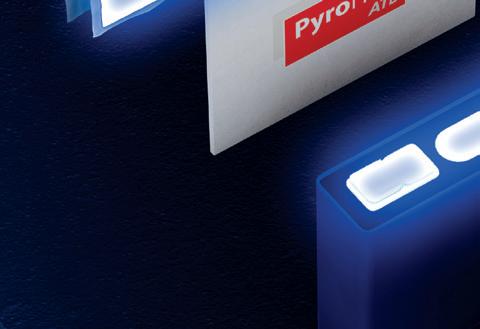

































Engineered Materials Solutions (EMS), a Wickeder Group company that produces functional clad metals for the Li-ion battery, electrical distribution, thermal control, consumer electronics and automotive markets, has acquired Colorado-based in Metal Parts, a provider of micro-components to the defense, aerospace, medical and audio industries.
TMP uses its photochemical etching, electroforming and laser cutting technologies, combined with rapid prototyping services, to supply high-precision parts to its customers.
“ in Metal Parts has been a leader in the manufacturing of high-precision micro-components for over 20 years,” said President Stephen Trahey. “By joining forces with EMS and becoming part of the Wickeder Group of companies, we will be able to tap into a deep pool of resources, positioning us to better meet our customers’ evolving needs.”
Paul Du y, CEO of Engineered Materials Solutions, noted that the Wickeder Group’s portfolio already includes three companies in Europe that produce micro-components. TMP complements that portfolio perfectly, and the acquisition should expand market opportunities in the North American market. “ is acquisition expands the breadth of products and markets served by EMS and aligns with the Wickeder Group’s capabilities in the micro-components industry,” said he.

German chemical company Evonik is expanding its TEGO erm product range to provide heat protection and re-resistant coatings for EV battery housings and covers to prevent thermal runaway.
e range includes TEGO erm HPG 4000 granules, which have a microporous silica core for low thermal conductivity, high hydrophobicity, and reduced ammability. TEGO erm HPG 6806, a ner silica-based granule, is designed to strengthen mechanical performance and ensure smooth, even surfaces of insulation coatings.
e TEGO erm L 300 waterborne polysiloxane hybrid binder further enhances the thermal stability and re resistance of protective coatings.
Coatings based on the range meet UL 94 V-0 re safety standards. Spray application on complex three-dimensional substrates ensures complete and e cient re resistance of the entire battery housing and helps to save space.
When subjected to a propylene ame at more than 1,000° C in testing, TEGO erm-based coatings protected the substrate e ectively as the temperature on the back remained moderate, even with a thin dry lm thickness.
“ e synergy between TEGO erm binder and granules is at the core of our solution. It minimizes heat transfer and e ectively inhibits the spread of res, o ering crucial additional time for emergency response,” said Niko Haberkorn, Global Head of Business Development for the Industrial & Transportation Coatings market segment at Evonik Coating Additives.





Silicon Mobility, an Intel company that provides automotive semiconductor and so ware control solutions, has announced the OLEA U310 Field Programmable Control Unit (FPCU) as part of its next-generation OLEA FPCU series. e new OLEA U310 consolidates the functionalities of multiple traditional microcontrollers into a single system on chip (SoC).
e OLEA U310 is speci cally engineered to match the need for powertrain domain control in electrical architectures with distributed so ware. Up to 6 standard microcontrollers can be replaced by a single OLEA U310 in a system combination where the FPCU is controlling in parallel an inverter, a motor, a gearbox, a DC-DC converter and an on-board-charger. is is designed to enable OEMs to run multiple time-based applications while simultaneously executing multiple event-based control functions.
OEMs and Tier 1 suppliers can design several variants of system integration with the OLEA U310, including a combination of the following functions: traction inverter and electric motor control with gearbox; DC-DC converter control; power factor converter control; on-board charger; air compressor for fuel cell; battery management system; thermal management system with high-voltage e-compressor control; and more.
e OLEA U310 is equipped with a complete so ware suite from Silicon Mobility, including OLEA COMPOSER, a design framework that integrates with development tools throughout the V-Model design cycle to accelerate the development process for OLEA FPCUs, and OLEA LIB, a so ware library that provides engineers with a modular set of pre-built, pre-tested functional blocks tailored to common powertrain control tasks.

Cable and connector specialist HUBER+SUHNER has launched a new purpose-built high-voltage modular cable assembly (mCAY) designed to be simpler to assemble and to save development e orts and time for manufacturers of commercial EVs such as trucks, buses and specialty vehicles. End-of-line testing is included within the assembly process, so once the mCAY solution has been assembled and tested together, the customer can install it immediately in commercial EVs.
“Many vehicle manufacturers focus on the direct costs of their solutions, without paying enough attention to indirect production costs such as assembly, test and production equipment,” says the company. “ ese costs can be signi cantly reduced by considering requirements from production, and through the application of a modular approach, rather than a product-by-product approach.”
HUBER+SUHNER is also launching a product con gurator that allows customers to tailor products to their exact speci cations. e WEB enables users to mix and match cables, connectors and glands in just a few clicks. Options for numerous cable sizes and types (single-core, multi-core or ex) are included, so an mCAY can be customized through the con guration so ware.
HUBER+SUHNER’s modular cable assemblies are designed to be fully compatible with other products in the company’s high-voltage portfolio, including RADOX cables, the modular High-Voltage Distribution Unit (mHVDU) and the RADOX EV-C connection system.
“Our partnerships with major connector manufacturers ensure our engineers remain up to date with the latest solutions. We then use our team’s experience with these technologies to deliver ready-to-use assemblies perfect for our customers’ requirements,” said Senior Product Manager Robert Weirauch.
By Jeffrey Jenkins









In the previous article on o -grid EV charging, the focus was on the energy storage battery and the DC-AC inverter that supplies the EV charger (and all of the other AC loads). is time the focus will be on the renewable energy sources themselves. For reasons of practicality (and availability) the emphasis will be on solar, but wind and hydro will be brie y discussed as well for the rare cases in which they make sense.
That last statement is bound to be controversial, so we might as well get it out of the way first. The main issue with hydroelectric generation is that it will only be an option for those lucky few who either have (legal) access to a fast-moving stream/river or a decent size pond/lake at a much higher elevation on their property (and some way to dispose of the water that will be drained from said body to generate electricity). Since this is necessarily a short article, I have to do triage here and eliminate the less-practical and/or less-available options from consideration, and hydro definitely falls into the latter category, though it is otherwise an excellent option.
e main issue with wind is that it is rarely economically justi able, and the o -cited justi cation that wind can produce power when solar can’t (at night, during a storm, etc) makes this a di cult argument to make, but I’ll give it a shot anyway. Firstly, wind speed goes up with height and all types of wind turbine—whether employing drag, like the Savonius, or li , like the classic horizontal propeller type—work best when the wind ow is non-turbulent (aka laminar)—so the turbine needs to be placed as far away from (and above) any obstructions, including trees, buildings, etc, as possible. e cost of even a bare-minimum 10 m (~33 ) high tower will be the same as 6 or more solar panels on a ground mount, while the cleared area needed for the wind generator could just as easily support more panels—hence you’re better o getting the panels. Secondly, most residential-scale wind generators (i.e. in the range of 200 W to 2 kW nominal rating) are spec’ed to deliver rated power at a wind speed of 8 m/s, or 18 mph (which is quite breezy!), and power output is a cubic function of wind speed, so if your average wind speed is just 4 m/s, as it is in most of Florida, then prepare to be disappointed by an 8-fold reduction in output (you can check your average wind conditions
Photovoltaic solar is arguably the most practical choice among renewable energy sources. It is relatively easy to trade off between effi ciency, area required, complexity of the mounting system, etc, to achieve a certain amount of power output and average daily energy production.
here: https://www.climate.gov/maps-data/dataset/average-wind-speeds-map-viewer). irdly, high wind conditions are potentially even more of a problem, for both mechanical and electrical reasons. Turbine RPM is directly proportional to wind speed (if braking torque—that is, amperage draw—is constant) but it generally takes a really strong (and sustained) wind to cause mechanical failure. Of more potential concern is that the generated voltage is also proportional to RPM, and it is quite possible that it could rise to dangerous levels during a run-of-the-mill storm. ere are purely mechanical solutions to protect against overspeed, such as governors and automatic yawing (to turn the blades away from the wind above a certain RPM), but these are generally too costly to be economical on small-scale wind turbines, so the usual solution is just to make the charge controller more tolerant of high input voltages (which itself incurs a penalty in higher electrical losses) and/or to switch on an additional load resistor to apply more braking torque. Even so, a distressing number of wind turbines fail every year from excessive speed, as a cursory search of videos will show.
Destruction from overproduction isn’t possible with photovoltaic (PV) solar, however, and as most of the planet receives a decent amount of sunlight per day (aka insolation ), it is arguably the most practical choice among renewable energy sources. It is also relatively easy to trade off between efficiency, area required, complexity of the mounting system, etc, to


achieve a certain amount of power output and average daily energy production with PV solar, and it is far easier to increase the power output of an existing PV system compared to wind or hydro.
Generally speaking, the ideal location for a PV panel array has an unobstructed view to the south (in the northern hemisphere) over as much of the day as possible (but at least during the peak generating hours of 10 am to 6 pm), and the most energy will be generated if the panels track the sun over the course of the day, while the tilt angle is varied over the course of each season. That said, these mechanically-complex sun tracking schemes provide a relatively modest increase in total energy production (10-20% is typical) compared to their costs, so mounting the panels at a fixed tilt angle (approximately the same as the latitude) pointed directly south is usually the most economical option.
The two main mounting options are on the ground or on a roof. Ground mounting is the most flexible with regards to the above considerations of tilt angle and orientation, but any obstructions that could shade the panels need to be farther away and/ or shorter. Roof mounting systems tend to be a lot cheaper, and the gain in height relaxes the shading issues, but I would only consider such if the roof has a lifetime exceeding 25 years, and, of course, the roof has a slope roughly the same as the latitude and is facing south. If the bulk of the roof faces east and west then it is possible to split the panels up into two banks feeding separate charge controllers on the premise that the east-facing array will provide energy over more hours in the morning while the west-facing array will do the same in the afternoon, but the overall cost will still be higher than for a south-facing array.
Before you get too set on where to mount the panels—particularly if on a roof—you’ll need to figure out how many of them will be required to meet your average daily energy demand, and that will depend on the insolation value, which is the average number of hours per day that PV panels will produce close to their rated power (another useful search term here is peak sun hours ). A good resource for such data (in tabular as well as map form) is available from the National Renewable Energy Laboratory’s website (https://www.nrel.gov/gis/solar-resource-maps.html).
The typical solar panel available these days will deliver 36-44V open circuit and 8-11 A short circuit, while virtually all charge controllers (whether internal to the inverter or standalone) require the voltage from the PV array to be higher than the battery voltage, so any practical off-grid array will consist of panels wired in series.
For a quick and dirty ballpark estimate, divide your average daily energy use by the insolation hours to get the bare minimum of panel power required (noting that this does not account for panel aging, exceptional uses, extended periods of cloudiness, etc). For example, to supply 20 kWh per day on average at a location that receives 4 sun hours of insolation you would need a minimum of 5 kW PV power capacity, which could be from 16 panels rated for 313 W each, or 12 panels rated for 417 W each, etc. You can install more panels than that, of course, but there are diminishing returns beyond about 3 times the above-calculated number unless you have the storage battery capacity to absorb the excess energy and need to handle extended periods of cloudiness without resorting to a backup generator.
The typical solar panel available these days will deliver 36-44 V open circuit and 8-11 A short circuit, while virtually all charge controllers (whether internal to the inverter or standalone) require the voltage from the PV array to be higher than the battery voltage, so any practical off-grid array will consist of panels wired in series. Maximizing string voltage will minimize conduction (I 2R) losses, and given that pretty much all PV panels made today have internal bypass diodes, the issue of the cells—or entire panel— being forced into reverse conduction when shaded is eliminated. Wiring panels in parallel trades the big swings in voltage that result from shading of one

Finally, there are numerous ancillary items that will be required for a PV energy system, including DC-rated fuses and/or circuit breakers, combiners and/ or Y-cables, surge arrestors, conduit and wire, and a whole bunch of PV connectors.
or more panels in the string for a reduction in total string current. However, the bypass diodes are typically axial-leaded Schottky types without any heatsinking besides said leads, so they can’t really handle more than about 10 A or so, especially when baking in the hot sun. Consequently, two—or maybe three— panels in parallel are the practical upper limit. If you need more power than you can get from about 300 VDC open circuit and 20 A short circuit, then simply break up the PV array into multiple strings that each feed their own charge controller (that can all feed a common storage battery). Most of the higher-power AIO inverters have two PV array inputs, anyway, so that gives a practical power handling capacity of 12 kW right there.
The charge controller that goes in between the PV array and the battery is the final key piece of equipment to consider. As discussed in the previous article, hybrid solar/all-in-one inverters have a PV-input charge controller built into them (and likely even two), and while that is certainly convenient, it might not be the most flexible solution, and it also might not do the best job of MPPT, or Maximum Power Point Tracking. There is also a compelling argument that a separate inverter, AC-input battery charger and PV-input charge controller will be less expensive to maintain if (or when) something fails. The other concern—that it might not do a good job of MPPT— is harder to quantify in the real world unless you have two identical PV strings, with one feeding the charge controller in the AIO and the other feeding a standalone charge controller. I did just that, and while a dataset of one is hardly authoritative, I did notice
that the standalone charge controller consistently extracted about 10% more power from its string compared to the AIO, and it also responded more quickly to intermittent shading from passing clouds. That last observation points to a better/faster MPPT algorithm, which basically hunts for the best combination of loaded voltage and output current from the panels to deliver the most power, as above a certain current (which is less than the short-circuit current) the output power starts to decline, and this current is proportional to the light intensity striking the panels, hence the need to hunt for it on a frequent basis. Finally, there are numerous ancillary items that will be required for a PV energy system, including DC-rated fuses and/or circuit breakers, combiners (to parallel panels at the string level) and/or Y-cables (to parallel panels at the panel level—but make sure they have inline fuses on each branch of the Y), surge arrestors, conduit and wire, and a whole bunch of PV connectors (usually—but not always!—the MC4 type). Off-the-shelf PV combiner boxes feature a two-pole circuit breaker for each string in the array with a two-pole surge protection device on the output side (i.e. from each side of the array to the usual two or more ground rods pounded into the earth) along with knockouts along the perimeter of the box for half-inch or three-quarter-inch conduit, making them a convenient way to wire everything up. The wire that joins the panels together and leads back to the combiner needs to be specified for PV use (e.g. UL 4703 rating) but the wire that goes from the combiner to the charge controller can be of any type if the conduit is continuous and buried at least 24 inches deep, as long as it is of an appropriate gauge for the current (#12 is typically used for 10-15 A and runs of 100 feet or less; #10 is recommended for longer runs and/or if bumping up against the 20 A practical limit for a single array). However, given the price of PVC conduit these days, it might very well be more economical to go with cable rated for direct burial (such as type UF-B or mobile home feeder) so that only short stubs of conduit (that extend 18 inches below grade) are needed at either end of the run. When the cost of everything involved in an offgrid energy system is tallied up, the economics might seem questionable, but that will almost certainly fade into insignificance the first time you recharge your EV with it.
Form hairpins, I-pins & stator connector pins with ease using WAFIOS' new





















at WAFIOS' Midwest Tech Center For:
Validating technical feasibility
Sample production for prototyping
Complete support from the first sample to a mass production solution













































monitoring for quality control























By Charles Morris
battery technology is advancing rapidly—it seems like every few days we read about a scienti c breakthrough that will enable safer, cheaper, smaller and more energy-dense batteries. However, the road from the lab to the auto dealership is a long one—it typically takes several years of testing and development before a new battery technology is ready to be incorporated into production vehicles.
Wildcat Discovery Technologies, which has been developing battery materials since 2006, specializes in accelerating this process. The company uses proprietary high-throughput synthesis and testing platforms to rapidly evaluate thousands of materials and chemistries, and it partners with customers to develop customized battery cells for specific applications.
Recently, Wildcat has shi ed its strategy—the company will become a producer of cathode materials, while continuing its research and engineering activities. Last December, Wildcat announced plans to build a US plant to produce a portfolio of nickel-free and cobalt-free cathode materials.
Charged spoke with Wildcat President and CEO Mark Gresser about his company’s plans, and the multiple advantages of its new cathode designs.
Q Charged: When we spoke back in 2021, you were working on an EV Supercell that featured a new type of cathode, a solid electrolyte and a lithium metal anode. What’s been happening at Wildcat since then?
It turns out the process and equipment we use to make DRX is shared with other cathode materials like lithium iron phosphate. So, if we’re going to build a plant in the US to make the DRX material, we could manufacture LFP in the same facility.
A Mark Gresser: Over the last few years, cell makers in North America have been looking for accessible, long-term alternatives to China-based cathode active material production. at’s why we’re shi ing our strategy. Our new mission is to produce high-performance US-made cathode materials to enable widespread adoption of clean energy.
e cathode material you and I discussed in 2021 has been advancing very rapidly. We looked at what the industry needed and where we had opportunity, and realized that our DRX cathode was really the star of the show.
e DRX cathode, as we call it, stands for disordered rock salt. It is a high-energy, no-nickel, no-cobalt product that is going to compete really well with all the high-nickel materials that are in the industry now. We’re not quite ready to launch it today, but we’re getting close enough that we want to scale, and we’re seriously thinking about how and where we’re going to manufacture it right here in the United States.
It turns out the process and equipment we use to make DRX is shared with other cathode materials like lithium iron phosphate. So, if we’re going to build a plant in the US to make the DRX material, we could manufacture LFP in the same facility.
LFP is becoming the fastest-growing cathode material in the world, and it’s made almost exclusively in China today. Given the current climate and the desire of our customers to have a more localized supply chain, we’ve decided to expand our strategy. In the near term, we will
produce LFP and be one of the rst US producers of a really fast-growing cathode material. en we can use the same suite of equipment and the same process steps to produce both LFP and our new DRX material.
en in between those two materials is a manganese-rich version of LFP called LMFP. We’re getting lots of customer inquiries about LMFP, so we are developing recipes for that product as well. e overall plan for Wildcat is to produce a family of products that covers the whole spectrum of EV and stationary storage needs, here in the US.
Q Charged : Can you dig a little deeper into how the development of the DRX cathode happened, and the advantages of it?
A Mark Gresser: We started investigating disordered rock salt around 2015. We put a small team on it, as we’re apt to do here at Wildcat, using our high-throughput technology. Our scientists found some interesting compositions that looked really promising, so we started ling
We see DRX as a breakthrough for the battery industry. From a performance standpoint, it’s made from mostly abundant and available low-cost materials. No nickel, no cobalt.
some patents. We’ve got some great patent coverage on that technology, and that’s our foundational IP.
One of our partners in this work is CBMM. ey’re a big mining concern in South America, and they can supply some of the metals we use in the product. BMW has shown interest in this technology, and we announced a joint development agreement with them a couple of years ago. ey’re providing technical support, they’re doing testing, they’re actively involved in bringing DRX to commercial readiness.







Here at Wildcat, we’ve been continually increasing the resourcing on this project. ere are 50 of our people now working on this project exclusively, and we’ve got a partnership with McGill University, with a really sharp team led by Professor Jinhyuk Lee.
We see DRX as a breakthrough for the battery industry. From a performance standpoint, it’s made from mostly abundant and available low-cost materials. No nickel, no cobalt. e material has the potential to be about 20% more energy-dense than the high-nickel materials that are nding their way into the market now.
We also see the potential for a big safety advantage. e material performs very well in our early safety testing. We have more to do on the testing, but it looks like this is going be a clean, safe, higher-energy, low-cost material for the high end of the EV market.
Q Charged: Of those bullet points of advantages, would you say the low cost of the materials is the top one?
A Mark Gresser: It’s certainly one of the top three—of
LMFP is a manganese-rich version of LFP. Manganese is very cheap, and it operates at a higher voltage. The theory is you’re not really adding costs, but you’re adding energy.
course, depending on who we speak with. For some, the higher energy is pretty compelling, and then safety, as you know, is critical. We’re not quite ready to market it today because we’re still developing the material. We think it needs another two years before we’re ready to start shipping samples to customers, but certainly low cost on a $/kWh basis will be critical.
Q Charged: Can you break down the di erence between LFP and LMFP?

A Mark Gresser: Lithium iron phosphate has been around a long time. It’s one of the oldest of the cathode materials, but it was deemed to be not energy-dense enough for EVs.
However, about three years ago something changed. Some clever engineering from Chinese manufacturers took advantage of the safety of the material and designed packs that were much lighter.
When you factor in the lower cost of LFP packs, there is a growing market. Many have taken notice and LFP is now



About three years ago something changed. Some clever engineering from Chinese manufacturers took advantage of the safety of LFP material and designed packs that were much lighter.
the fastest-growing cathode material out there. LMFP is a manganese-rich version of LFP. You’re substituting a lot of manganese into the mix to replace some of the iron. A typical ratio of manganese to iron in that product is around 60:40. ese products perform similarly, but manganese is very cheap, and it operates at a higher voltage. Because of that higher voltage, you can get about a 15% boost in energy density. e theory is that you’re not really adding costs, but you’re adding energy.



For a globally produced product like LFP, the IRA is critical. Otherwise, it would be diffi cult to set up a plant and compete directly with Chinese manufacturers.
e reality though, is that it’s not widely used yet. ere are a number of companies saying they have LMFP ready to go, but much of the LMFP we’ve tested exhibits some shortcomings. We’ve found that most LMFP we test still doesn’t cycle like LFP. And there are a few other small de ciencies.
We think there’s an opportunity to create a better version of LMFP, and so we’re working on this. We have a basic 60:40 manganese version in testing now that some key customers are evaluating. Based on their feedback, we’re pushing that LMFP to higher levels of manganese and better performance.
And then our DRX product is a great t for anything needing a boost in energy—especially premium EVs. So, across our portfolio of three cathodes, we have a low-tech to high-tech spectrum, and a very large cross-section of applications.
Q Charged: Numerous EV industry execs have told Charged the “Buy American” provisions of the 2022 In ation Reduction Act (IRA) are driving massive investments in domestic EV battery materials. How important is the IRA to your plan to manufacture materials in the US?
A Mark Gresser: It is a big driver for our plan to go into manufacturing. We want to scale and produce DRX material because the value proposition for that is great. It’s patent-protected, it o ers higher energy, lower cost, better safety. It checks all the boxes. However, the product isn’t ready to commercialize today. So when the IRA came around, we realized that we could get to scale more quickly by manufacturing multiple cathodes via the same process, which led us to the LFP/LMFP strategy.
For a globally produced product like LFP, the IRA is critical. Otherwise, it would be di cult to set up a plant
and compete directly with Chinese manufacturers. Right now, there’s signi cant overcapacity in China, and when there’s overcapacity, they drop pricing quickly. e IRA tax incentives coupled with tari s protect US manufacturers and o er an important opportunity to invest in manufacturing.
We designed our US plant to keep costs very low. It’s a very automated plant, and a well-engineered process, so we can compete apples-to-apples with anybody.
Q Charged: When you say a hundred percent IRA compliant, that means all your base materials are coming from approved countries. Are those supply chains already in place or are they being built at the same time as you’re ramping up?
A Mark Gresser: Supply chains don’t really fully exist in the US or in compliant countries yet—they’re being built. We’re at one place in the supply chain—we’re making cathode powder and selling to cell makers. But then further upstream from us, you’ve got people making the precursor materials that we use to make our cathode material. We’ve got a lot of MOUs in place with lithium providers, so we don’t think that’ll be a problem.
When you look at building a US-based supply chain for EVs, you have to look at the whole supply chain. You have to go all the way back to the mined materials and make sure that the US is also supporting the development of critical mineral supplies here in North America, and I think our Department of Energy is doing this well.
Q Charged : Do you have any concern about the IRA being rolled back?
A Mark Gresser: We talk a lot with the politicians, the DOE, and other stakeholders about this issue. e sense we get is that the EV supply chain in the US has become a fairly bipartisan issue.
US-made batteries mean energy independence. It’s a key technology for the future, and it isn’t just the passenger vehicle market. It’s trucks, shipping, military applications. Having the ability to produce high-tech batteries in the US and do the R&D for those batteries in the US, we think that puts Wildcat in a pretty good spot. If you combine that with cathode production here in the US, that’s a situation that is not reliant on any kind of foreign partnership, and serves the US well.

Q Charged: If the IRA sticks around, I think it might be one of the most impactful pieces of legislation ever in terms of US manufacturing. e amount of activity that I see every day is insane.
A Mark Gresser: I was just putting together a slide for a presentation—it was about the number of gigafactory announcements in the US pre- and post-IRA. ere’s something like 43 gigafactories that have been announced, and the IRA is a major driver. We’re literally creating a new auto industry and it’s all US-based, which is terri c.
Q Charged: What’s up with the legacy Wildcat business? Are you guys still doing that in parallel with this?
A Mark Gresser: Yes. We’ve got this incredible high-throughput R&D capability, and over the past couple of years, we’ve continued to take that to the next step, from basic R&D to starting to scale. We’ve put in all types of equipment that allows us to make small and large pouch cells right here at Wildcat. We’ve got two dry rooms. We’ve got coaters to produce anodes and cathodes. We’ve got a huge slot dye coater for our big cells. We’ve got all the equipment we’re going to use in production at a pilot scale here in San Diego.
When you think about customer evaluations, the typical process for cathode makers is to ship a powder to a cell maker or an automaker, and then wait for months, sometimes even a year, to get feedback. You’re waiting for them to turn that material into a slurry, make a lm, build a battery and then cycle the battery. You’re asking your customers to provide all that work, and that’s a lot of time and money for them.
So, imagine how much we can accelerate the adoption cycle for our products because we don’t have to ask our customers to do all the work of evaluating a new material. And we take it one step further—if they decide they’re going to use our LFP or our LMFP, we can execute a benchmark project like those we o er to our legacy customers, where we start with the Wildcat cathode, evaluate dozens of anodes, and then tailor multiple di erent electrolyte formulations to work best with that anode/cathode pair. And we can present all that to our customer and say, “If you’re going to buy the Wildcat cathode material, we’ll help you design the whole cell and optimize its performance.”
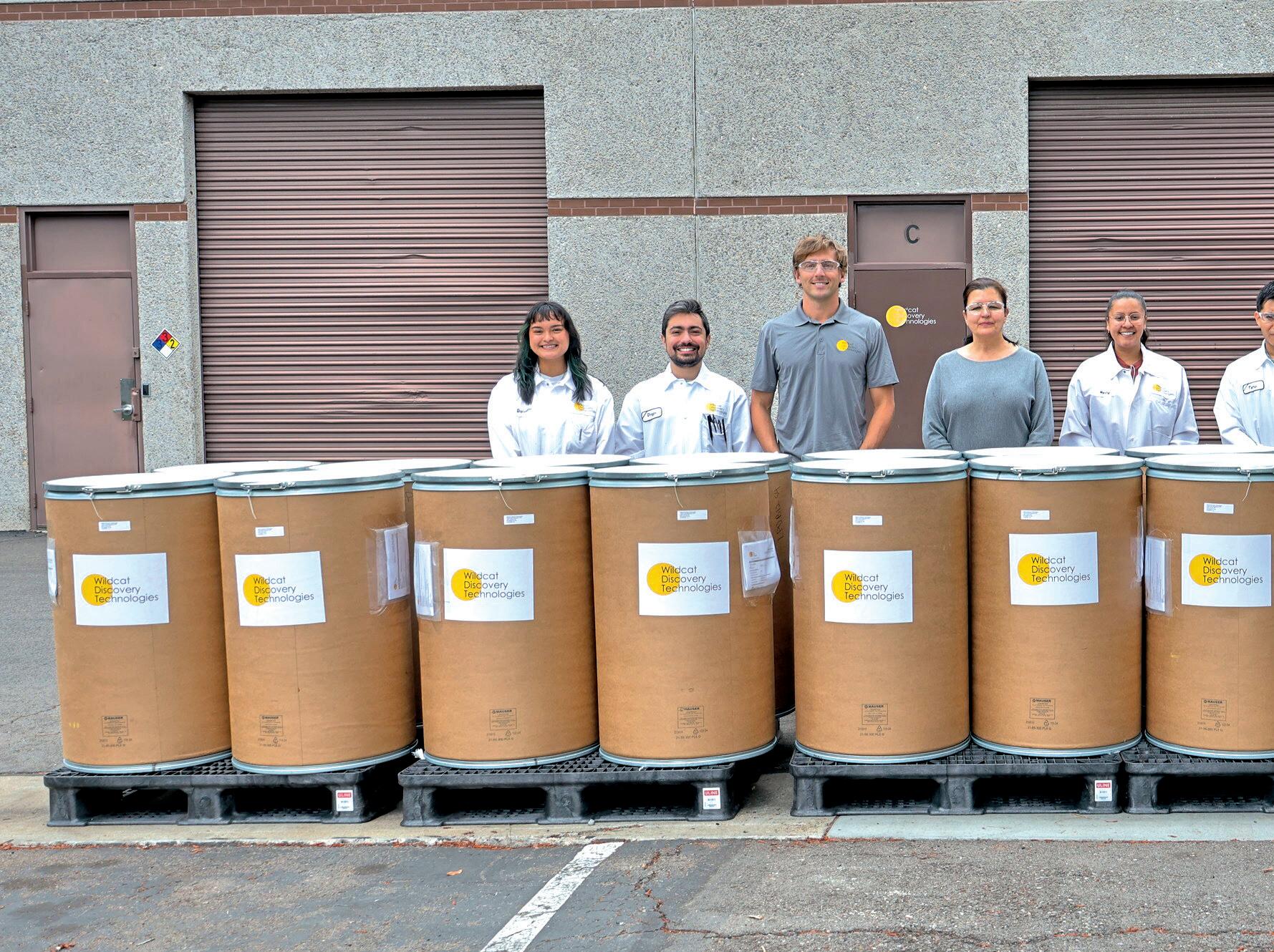
There’s something like 43 gigafactories that have been announced, and the IRA is a major driver. We’re literally creating a new auto industry and it’s all US-based, which is terrifi c.
Q Charged : You’re aiming to produce LFP material in 2026.
A Mark Gresser: We plan to have the plant stood up in Q4 2026.Of course, selling product will happen later in 2027. Our plan is to produce cathode powder. We’ll be shipping that to cell makers. And it goes beyond EVs—LFP is the material of choice for stationary storage, which is becoming another big market, and we’re already sampling with customers in this space.
Q Charged: How’s the progress on the new plant? Have you announced the location?
A Mark Gresser: We’re making large quantities of material for customer sampling, but that’s from our San Diego demonstration line. In fact, we recently produced one metric ton of LFP cathode material, which demonstrated our capacity for large-scale production. We’re sharing it with customers for sampling, and feedback has been very positive.
For the new plant, we’ve got an engineering rm on board, and they are in the nal phase of designing the



plant. We hired top experts to lead our manufacturing team. We’re actively raising capital now, and looking for key strategic partners to go to the plant scale. We’re telling folks that the plant will be in the battery belt in the Southeast of the US, but we haven’t made a formal location announcement yet. We’re going to keep the R&D headquarters in San Diego—there’s a couple of reasons for that, and one is access to talent. California is a great place to access scienti c talent—the value of the labor pool here outweighs any cost disadvantages. But when it comes to large-scale manufacturing, we have to be cognizant of utility prices in California vs other states, and for us, utility cost is one of the main drivers for our decision on location.
We are excited about Wildcat’s future. Our vision is to be the rst choice for battery materials development, integration, and supply—and we have the strategy, expertise, innovation, and best team in the industry to make it happen.


Multiphysics simulation helps in the development of innovative battery technology by providing insight into mechanisms that impact battery operation, safety, and durability. The ability to run virtual experiments based on multiphysics models, from the detailed cell structure to battery pack scale, helps you make accurate predictions of real-world battery performance.
» comsol.com/feature/battery-design-innovation

Southern California-based medium-duty electric truck manufacturer Harbinger has received 4,000 binding pre-orders from customers that include Bimbo Bakeries USA, RV manufacturer THOR Industries, postal service operator Mail Management Services and several North American commercial vehicle dealers.
ese include Doggett Equipment Services Group (500 units), Campbell Supply (125 units), GATR Truck Center (500 units), ETHERO Truck + Energy (200 units) and Electric Commercial Vehicles (50 units). Harbinger says its growing North American network of dealers is positioned to serve 78% of the population.
e company also announced the closing of an additional $13 million in Series A funds in the fourth quarter of 2023 from investors that include Coca-Cola’s System Sustainability Fund. is brings the new Series A total to $73 million, which Harbinger plans to use to expand manufacturing capacity and launch commercial production in the fourth quarter of 2024.
“We are focused on the medium-duty vehicle segment, where there is a huge variety of vehicles built on chassis like ours,” said Harbinger CEO John Harris. “Today, most manufacturers are adapting gasoline or diesel vehicles to electri cation, rather than building a groundup electric platform. is compromised approach leads to concerns with vehicle safety and durability as well as higher production costs, which is why we chose to start fresh with a clean sheet design.”

US-based school transportation provider First Student has received $200 million in rebates from the third round of funding of the EPA’s Clean School Bus Program.
e new funding brings First Student’s total program awards to $401 million across the three funding rounds. is round will enable the company to deploy up to an additional 670 electric school buses in 45 school districts across the US, bringing the total from all three EPA rounds to over 1,200 buses.
e Clean School Bus Program allocates funds for school districts to help cover the cost of replacing fossil fuel school buses with zero-emission vehicles and associated charging infrastructure. First Student works directly with school districts on electrifying their bus eets, collaborating with them on the applications to the EPA and then deploying and maintaining the vehicles once they are in service.
e company has deployed over 350 electric buses across North America, and has also been awarded approximately $65 million through other federal, state and utility programs in the US and Canada to electrify school bus eets.
“First Student electric school buses funded by this program are already creating safer and cleaner rides to and from school, and these investments mean expanding that bene t to even more districts,” said First Student Head of Electri cation Kevin Matthews. “School districts can put these awards to use right away, turning these rebates into much-needed eet upgrades.”





Yanmar Compact Equipment, a Japanese engine and heavy machinery manufacturer, has announced a new trio of electric-powered machines as part of its Unplugged range: a wheel loader, mini-excavator and tracked carrier. All three new electric models match the output of Yanmar’s legacy ICE equivalents.
e SV17e Mini-Excavator is powered by an 18.3 kWh battery pack. It musters digging forces of 9.9 kN and 8.9 kN from its short and long arms, respectively, as well as 16 kN bucket force. It’s designed for compact spaces, and its nearly silent operation makes it suitable for working indoors, as well as in noise-restricted areas. An optional fast charger can replenish the battery (20-80% SOC) in about 2 hours.
e V8e Wheel Loader boasts four working modes (Bucket, Fork, Eco, Power), a bucket volume between 0.8 and 1.2 cubic meters, and a payload on forks of 1,890 kg. Two battery pack options are available: 39.9 kWh and 53.2 kWh. e latter provides up to 4.2 hours of continuous operation in Bucket mode. e loader’s synchronous motor o ers 22 kW rated and 30 kW peak power. Charging power is 11 kW standard, upgradeable to 22 kW.
Yanmar’s C08e Tracked Carrier has a 5.5 kW (rated), 6.5 kW (peak) electric motor and a hydrostatic transmission to ensure smooth handling and operation on inclines up to 20 degrees. Its haul body can carry between 0.34 to 0.42 cubic meters. e 10.4 kWh battery pack has three selectable working modes—battery life is up to three hours in the most demanding mode.

Komatsu, a Japanese manufacturer of construction, forestry, mining, military and industrial equipment, has announced that the second generation of its smallclass drill and bolting equipment will include battery-electric models.
e ZB21 small-class bolter and the ZJ21 jumbo drill will each feature an 83 kWh battery pack, which the company said would meet the challenges of hard-rock mining. Both will be fully compatible with existing Komatsu mine infrastructure.
e two are “the smallest size-class drills and bolters to o er a BEV option,” the company said.
In March, Komatsu opened a new o ce in Longview, Texas. e 56,000-square-foot facility consolidates multiple locations and functions into one building on the company’s manufacturing campus.
Kramer-Werke, a manufacturer of compact construction machines (and a unit of Munich-based Wacker Neuson Group), proclaiming that it is “time for clean air,” showed o its new 5065e electric wheel loader at the recent IFAT trade show in Munich.

e 5065e features a 96-volt lithium-ion battery. It was created for inner city work and is designed to o er very quiet operation. It is also suitable for use indoors and at locations such as parks and zoos.
e battery-electric wheel loader can operate for four hours on a single charge, and has four charging plug options.

APM Terminals Elizabeth, a division of shipping giant
A.P. Moller-Maersk, is dipping its corporate toe into electri cation. e company will invest $5 million in its Electri cation Pilot Project, including a $1.4 million Diesel Emissions Reduction Act (DERA) grant from the EPA.
e DERA grant has facilitated the replacement of seven diesel terminal tractors with new Ma T 230e Electric-Terminal-Tractors (eTTs), which support both plug-in and wireless charging.
e terminal has installed nine Heliox 60-180 kW DC fast charging stations, as well as an InductEV wireless 150 kW DC fast charging station. e eTTs can operate for 16-20 hours a er just two hours of charging time. e power used to charge the electric tractors is sourced from renewable energy through a power purchase agreement.
e pilot program, conducted in collaboration with the Leonardo Academy, will study key performance and operational aspects of using the electric trucks to test technology maturity and ensure operational readiness for the terminal.
“ e project wouldn’t have been possible without the funding assistance and support from the EPA,” said Henrik Kristensen, Managing Director of APM Terminals Elizabeth. “APM Terminals has set a goal to reach net zero in 2040 [and one of the tools is] the use of electric container handling equipment.”

e South Pasadena Police Department has completely replaced its gasoline-powered vehicles with EVs. e city’s eet of 20 new Teslas will rely on a bank of 34 new EV chargers installed at South Pasadena City Hall. As part of the project, the City Hall, Police Station and Fire Station buildings will be backed up by a solar PV system with battery storage, adding power resilience in the event of an outage.
e transition is expected to save about $4,000 per year per vehicle on energy costs, and to provide additional savings on maintenance. Overall, the city expects the operational cost of EVs to be around half the permile cost of legacy vehicles.
Replacing gas-burning police and other public safety vehicles with EVs can deliver more emissions reductions than replacing other vehicles, a city spokesperson said. Police vehicles typically idle more than other vehicles when o cers make tra c stops or respond to emergency calls.
Enterprise Fleet Management assisted the city in acquiring 10 Tesla Model Ys for patrol vehicles and 10 Tesla Model 3s for detective and administrative duties.
e cars were up- tted for police use through Unplugged Performance’s UP.FIT division.
“We’ve had the pleasure of developing best-in-class next-generation police vehicles alongside the great team at South Pasadena Police Department,” said Unplugged Performance CEO Ben Sha er. “As a result, 20 turnkey UP.FIT Tesla Model Y Pursuit and UP.FIT Tesla Model 3 Administrative vehicles have been produced to replace the full eet of aging ICE vehicles.”













Metals and mining giants BHP and Rio Tinto have announced plans to test large battery-electric haul truck technology in Australia’s Outback.


e two companies will collaborate with both Caterpillar and Komatsu to test the latter two’s battery-electric haul trucks in the rugged weather and terrain of the Pilbara, which has an arid and tropical climate where temperatures of 113° F (45° C) are not uncommon during the summer, making it an ideal test site for the battery-electric haul trucks.
e tests will assess the performance of batteries as well as static and dynamic charging systems in the harsh Pilbara environment.
e schedule calls for testing of two Cat 793 haul trucks in the second half of 2024 and two Komatsu 930 haul trucks starting in 2026, both at mine sites in the Pilbara.











ZeroAvia is developing hydrogen-fueled engines for commercial aircra , and has successfully completed ight tests of electric aircra in the US and in the UK.
Now the company has secured a conditional agreement from American Airlines to purchase 100 hydrogen-electric engines intended to power regional jet aircra . e two companies announced a memorandum of understanding in 2022.
American has also increased its investment in ZeroAvia—the airline made its rst investment in ZeroAvia in 2022, and has now participated in the company’s Series C nancing round.
ZeroAvia’s hydrogen-electric engines use hydrogen in fuel cells to generate electricity, which is then used to power electric motors to turn the aircra ’s propellers. According to the company, the only in ight emission is low-temperature water vapor, and the lower-intensity electrical systems have the potential to o er signi cant cost savings.
ZeroAvia is currently ight-testing a prototype for a 20-seat plane, and designing an engine for larger aircra such as the Bombardier CRJ700, which American operates on certain regional routes.
“Advancing the transition of commercial aviation to a low-carbon future requires investments in promising technologies, including alternate forms of propulsion,” said American CEO Robert Isom. “ is announcement will help accelerate the development of technologies needed to power our industry.”

American truck brand Peterbilt has announced its biggest electric semi sale to date: 150 of the company’s 579EV battery-electric trucks to Swedish transport company Einride. is eet of new EVs will service Einride’s North American customers.
Einride’s Freight Capacity as a Service o erings are designed to make it easy for eets to go electric by delivering a turnkey package that includes electric and autonomous vehicles, charging depot infrastructure, and the company’s proprietary digital freight platform, Einride Saga.
Peterbilt’s 579EV Class 8 semi has an 82,000 lb GVWR and a 670 peak hp (536 continuous) electric motor. Its 400 kWh battery pack delivers about 150 miles of range.
“We are proud to announce this partnership with Peterbilt and Rush Peterbilt Truck Centers as we combine our technology platform with their premium hardware to provide a market-leading o ering as we collaborate on the future of electric freight,” said Niklas Reinedahl, General Manager North America at Einride. “Bringing new technology to market is imperative to enabling the switch to electric freight operations.”
“Peterbilt o ers the industry’s most complete lineup of electric vehicles. Our focus on creating reliable zero-emission solutions enables Einride to electrify end-user eets and reduce tailpipe emissions,” said Peterbilt General Manager and PACCAR VP Jason Skoog. “ e Model 579EV is an example of that focus, and is the agship of the Peterbilt electric vehicle lineup.”





US school bus manufacturer Blue Bird has unveiled an operating prototype of an electric step van and underlying stripped chassis.
is prototype of the last-mile delivery commercial vehicle was built in collaboration with US electric truck manufacturer and eet services provider Xos for the powertrain and US work truck body manufacturer Morgan Olson for the body.
e prototype is built on a 178-inch wheelbase for vans with a gross vehicle weight rating of up to 23,000 lbs. It is equipped with a 140 kWh battery that is mounted inside the frame rails for protection and supports a range of up to 130 miles. Other features include “hill hold” to prevent rolling when the vehicle is stationary on a hill, “electric creep,” which simulates the slow forward motion of an ICE vehicle in gear when pressure is removed from the brake pedal, and 55-degree wheel cut for improved maneuverability. Blue Bird expects the electric stripped chassis to be commercially available in late 2024.“For nearly a century, Blue Bird has perfected its core capabilities of designing, engineering and manufacturing school buses from the ground up,” said Blue Bird President Britton Smith. “Now we are one step closer to applying our vehicle manufacturing expertise and expanding our electric-powered product range to the commercial vehicle market.”
US-based commercial EV manufacturer
Mullen Automotive has developed a new battery-powered version of its mobile EV charging truck, based on its Class 3 electric cab chassis truck.

e previous version of PowerUP announced in July 2023 used a gasoline Class 5 cab chassis platform and a propane and natural gas power generation unit. Unlike traditional fossil fuel-powered generators, the new version operates with minimal noise pollution, making it suitable for use in noise-sensitive environments.
PowerUP is designed to provide on-demand mobile DC fast charging in situations such as roadside assistance and emergency response where immediate power is required for recharging an EV or for emergency power backup.
e mobile charger is intended to be a scalable battery platform that can be con gured to meet various market needs, ranging from 10 kW to 1 MW, and can use new or repurposed battery cells. It features two DC fast chargers, each with 60 kW of output. Additional features include 12 V jumper terminals, 20 kW-160 kW AC output, and (optional) solar/wind o -grid power generation and a bidirectional 480 V grid connection.
Mullen is developing PowerUP at its High Energy Facility in Fullerton, California, as part of its plans to build a comprehensive EV ecosystem in the US. e company’s acquisition of battery pack production assets from Romeo Power is helping to accelerate the development of the battery-based PowerUP version.
“ e feedback on the initial PowerUP concept was overwhelmingly positive, but the market is clearly looking for a zero-emission solution,” said David Michery, CEO and Chairman of Mullen Automotive.

Volvo Trucks has announced that its electric models, rst introduced in 2019, have driven a total of more than 80 million kilometers in commercial tra c, equivalent to 2,000 laps around the earth.
e company says it has sold more than 3,500 electric trucks in 45 countries over the past ve years. Its global deliveries of electric trucks increased by 256% to 1,977 trucks in 2023. In the rst quarter of 2024, its share of the electric truck segment was 56% in Europe and 44% in the US.
Volvo Trucks has expanded its o erings since 2019 to a range that includes eight electric trucks: the FL Electric, FE Electric, FM Electric, FM Low Entry, FMX Electric, FH Aero Electric, VNR Electric, and the top-selling FH Electric, winner of the International Truck of the Year Award for 2024.
“Volvo’s electric trucks meet the needs of a wide range of applications—from urban distribution and waste management to regional haul and construction. Over the ve years of electri cation, Volvo has also built expertise in optimizing the use of installed energy, charging and servicing of electric trucks,” the company said.

Mercedes-Benz USA is introducing options for its 2025 eSprinter van that include an 81 kWh usable capacity battery, a standard roof height, and a 144-inch wheelbase. All eSprinter variants allow for a permissible gross vehicle weight of up to 9,370 lbs.
e eSprinter is equipped with a motor delivering a torque of up to 295 lb- , and is available with either 100 kW or 150 kW peak power. e range of the van, which is designed for last-mile urban delivery services, is up to 204 miles for the 81 kWh battery and up to 297 miles for its 113 kWh battery option.

“Daily delivery vehicles generally follow a xed predictable route that is usually under 150 miles—making the eSprinter the perfect solution for last-mile deliveries,” said Iain Forsyth, Director of Product Management and Marketing, Mercedes-Benz. “However, businesses have di erent needs when it comes to range, cargo volume and payload. It’s important to us to expand our product mix and provide options tailored to their speci c commercial purpose.”
e 2025 eSprinter has upgraded standard equipment, and enhanced safety and assistance systems. It starts at $61,250 and will be available in the second half of 2024.





Singapore concrete supplier Pan-United has unveiled an electric-powered concrete mixer truck. According to the company, using the electric mixer truck will reduce the carbon footprint of transporting ready-mix concrete by 45 percent compared to a legacy truck. e reduction in noise pollution is also a major bene t in Singapore’s dense urban environment.
e truck was built by SANY, a Chinese multinational heavy machinery manufacturing company. It has a 350 kWh battery pack, delivers up to 360 kW at peak power, and can charge up in two hours.
Pan-United describes itself as a global leader in low-carbon concrete technologies. e company produces carbon mineralized ready-mix concrete, which incorporates sequestered industrial waste CO2.
“We hope to eventually operate a substantial eet of electric concrete mixer trucks for our day-to-day operations,” said Mr Ken Loh, CEO of Pan-United. “ is step marks an exciting new venture in exploring alternative fuel technology and a deepening commitment to accomplish Pan-United’s aim of being a carbon-neutral ready-mix concrete company by 2050. Pan-United has been actively exploring ways to reduce our embodied and operational carbon emissions. is includes the use of alternative fuels and electric gensets in our operations to lower our carbon footprint.”

Amazon’s electric delivery trucks, which the retail giant developed in cooperation with Rivian, are becoming common sights in many parts of the US. Now the company is adding y Class 8 EVs to its drayage eet in Southern California.
Amazon’s Volvo VNR Electric tractors will haul both cargo containers and customer package loads in Amazon’s rst- and middle-mile operations. ey’ve already started hitting the road at the ports of Los Angeles and Long Beach, and a dozen are expected to be in service by the end of the year.
e Volvo VNR Electric has a range of up to 275 miles, and a gross combined vehicle weight rating (GVWR) of 82,000 pounds. Safety features include active collision mitigation, blind spot detection, lane departure warning, lane keeping assist and adaptive cruise control.
As Electrek’s Jo Borrás noted, Amazon gave itself a pat on the back for deploying the emissions-reducing electric trucks, but in fact the company has little choice—thanks to California’s new Advanced Clean Fleets regulation, deploying new ICE trucks in drayage applications will effectively be banned soon. (Enforcement of the regulation is currently on hold pending a decision from the EPA, but this is expected to be resolved within a year.)
“We’re proud to launch our largest eet of electric heavy-duty vehicles yet in California,” said Udit Madan, VP of Worldwide Amazon Operations. “Heavy-duty trucking is a particularly di cult area to decarbonize, which makes us all the more excited to have these vehicles on the road today. We’ll use what we learn from deploying these vehicles as we continue to identify and invest in solutions to reduce emissions in our transportation network.”

De Lijn, the Flemish government company that operates approximately 1,000 public bus and tram lines in Flanders, has awarded a framework agreement for 100 vehicles to Spanish bus builder Irizar e-Mobility, the EV manufacturing division of Irizar Group.
Under the agreement, De Lijn has the additional option to order HOV e-buses, which are used on longer routes; they are larger and more spacious, with enhanced passenger comfort and amenities.
“E-buses for HOV di er from regular e-buses by a more streamlined exterior and high-quality interior design,” said Ann Schoubs, Director General of De Lijn. “With Irizar, we have an additional supplier who has a strong reputation in the e-bus market for this higher segment.”
US delivery and logistics service provider FedEx has placed an order for 150 Blue Arc electric trucks from specialty manufacturer Shy for its pickup and delivery eet in the US.

e order follows pilot testing on last-mile delivery routes in Memphis, Tennessee. During the pilot, the Blue Arc truck operated extended 8- to10- hour routes under challenging conditions, including temperatures of 95-105° F.

e US DOE has awarded nearly half a billion bucks to three companies under the Domestic Manufacturing Conversion grant program to help accelerate the production of heavy-duty electric trucks and related powertrain components.
Volvo Technology of America will receive $208 to upgrade facilities at the Volvo Group’s Lehigh Valley Operations truck assembly site in Macungie, Pennsylvania, where it produces Mack trucks, and its New River Valley truck manufacturing plant in Dublin, Virginia.
“ e upgrades enable a novel manufacturing approach that will signi cantly increase the production capacity potential of battery-electric vehicles and fuel cell electric vehicles,” said the company.
“ rough facility upgrades and employee training, this grant will help our US plants more e ciently produce the innovative trucks and zero-emission powertrain components essential to this transition,” said Stephen Roy, Chairman of Volvo Group North America and President of Mack Trucks.
e projects are expected to create 295 new union jobs for Volvo and Mack.
e latest round of funding also included almost $158 million for ZF Axle Drives to convert part of its Marysville, Michigan, facility from ICE component production to EV component production.
Cummins will receive $75 million in matching funds to convert 360,000 square feet of an engine plant in Columbus, Indiana, to manufacture electric powertrain systems.



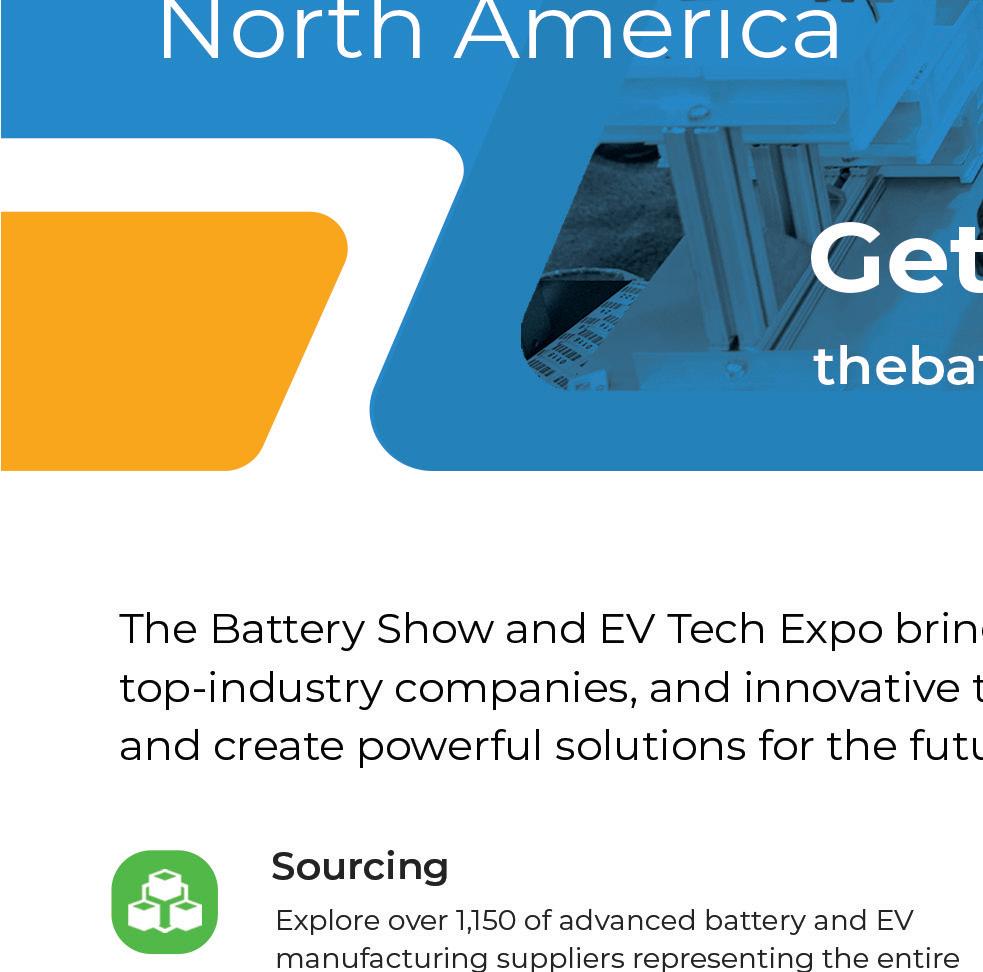





IS THIS THE ELECTRIC SUV FOR AVERAGE AMERICANS?












The overdue compact crossover from GM’s volume brand might start to let EVs escape Tesla’s long shadow— if dealers get on board.
By John Voelcker
t took far too long to get here, but it may have been worth the wait. e 2024 Chevrolet Equinox EV, GM’s smallest and least expensive battery-electric vehicle, is nally rolling into dealerships across the country. Now we’ve driven it, and it’s good.
IYou can view the electric Equinox as the anti-Tesla. Where the Silicon Valley startup’s Model Y is aggressively tech-forward, with few controls outside its central touchscreen, the Chevy is soothingly predictable, with knobs for climate control, a stalk for the turn signals and wipers, and another for the gear selector. It even has a drive selector on the column, just like a sixties Chevy with a column-shi automatic—which opens up the console to make room for two large drinks and even a slot for pens (though, oddly, the Equinox EV doesn’t offer wireless charging in any trim).
Not visibly electric
e relatively sleek crossover shape says “small SUV” without telegraphing the electric powertrain, and the interior bears a clear family resemblance to other Chevy models—including the large horizontal touchscreen and digital instrument cluster.
Bring one home for a test drive, and your neighbors might never know you’re driving an EV—except, of course, for its humming sound below 22 mph and its smooth, silent acceleration. Chevy caters to mainstream US car shoppers, and the Equinox EV almost seems designed to reassure them: “See, look, EVs aren’t weird or strange. ey’re just like, y’know, regular cars.”
Crucially, with EVs still priced above the market average and interest rates high, the Equinox EV is GM’s most a ordable plug-in model. e launch versions start at $43,295 for the 2LT trim (which wraps in




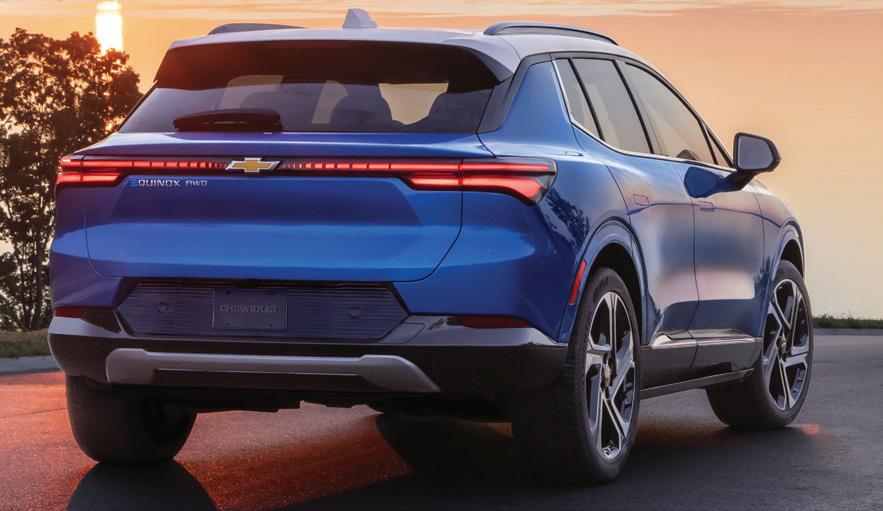

Where the Tesla’s Model Y is aggressively tech-forward, with few controls outside its central touchscreen, the Chevy is soothingly predictable.


the required $1,395 fee for delivery). e high-end 3RS trim starts at $46,795. All-wheel drive adds $3,400. e RS trim is an appearance package for $1,500. Every Equinox EV is eligible for the federal $7,500 purchase rebate, which brings the total cost below the crucial $40,000 level.
Even better, Chevy promises an entry-level trim starting at $34,995 “later this year.” If this proves to be real, that’s a cost under $30,000 after the point-ofsale rebate—assuming the entry-level model is widely available, and not just a single loss-leader vehicle to lure in shoppers. It also assumes the dealership plays ball and doesn’t keep some or all of the rebate for itself (it has happened).
Built on the Ultium platform that will spawn close to a dozen di erent crossover utility vehicles and full-size trucks and SUVs, the Equinox EV competes straight
across with the Tesla Model Y—including on EPA-rated range. At the time of writing, an Equinox EV with front-wheel drive (319 miles, $43,295) slightly undercuts the Tesla Model Y Long Range RWD on price (320 miles, $44,990) with equal range. Every version of each vehicle quali es for the $7,500 federal point-ofsale purchase rebate. However, note that Tesla changes prices and specs so o en that this information may already be out of date. Con rm the ranges and prices for yourself.
Chevy can provide more than 300 miles of EPA range because it uses a larger battery pack than most competitors. Beyond the Tesla Model Y, those include the Hyundai Ioniq 5, Kia EV6, Nissan Ariya and Volkswagen ID.4. Every version of the Equinox EV offered in spring 2024 is powered by an 85 kWh battery that uses NMCA cells fabricated at one of the two joint-venture GM-LG Ultium cell plants—in Lordstown, Ohio or Spring Hill, Tennessee. (A third









Every version of the Equinox EV offered in spring 2024 is powered by an 85 kWh battery that uses NMCA cells fabricated at one of the two joint-venture GM-LG Ultium cell plants in Ohio or Tennessee.
cell plant in Lansing, Michigan is now under construction.)
at battery sends current to a 213 hp motor powering the front wheels. All-wheel-drive versions add a second motor at the rear, giving a total combined power rating of 288 hp—at the cost of a lower range rating. EPA ranges are 319 miles for FWD, but 285 miles for AWD.
Spacious, predictable, not weird Chevrolet calls the 2024 Equinox EV a “compact” crossover, but it has the dimensions of a mid-size SUV from 20 years ago. It’s also longer, wider and heavier than the gasoline Equinox. e phenomenon of automotive bracket creep is real, and pervasive, but the electric Equinox is on the very outer edge of what you might reasonably consider “compact.” at said, the extra size goes toward excellent interior volume— not every compact crossover lets 6-foot passengers sit behind one another. e at oor ahead of rear-seat riders adds to the sense of spaciousness.
Behind the wheel, the Equinox EV lacks the explosive acceleration provided by some of its electric competitors. Acceleration is perfectly suitable (0-60 mph
in 8.0 seconds for the FWD model, Chevy says, and 6.0 seconds for AWD), but the pedal feel is progressive, meaning the driver must speci cally ask for power to get it—and full-bore acceleration requires ooring the pedal. Just like a gasoline car, perhaps?
On the road, the handling and roadholding induces con dence without being particularly memorable. Our test drive took place in and around Detroit, a monotonously at region laid out largely with straight and rectilinear roads—meaning we had zero chance to toss it through hilly curves to see how it does outside a typical suburban driving scenario.
We also didn’t get a chance to test the charging capability. Every Equinox EV carries an onboard AC charger rated at 11.5 kW, which translates to as much as 36 miles of range added for each hour of charging. DC fast charging at up to 150 kW comes via a CCS port. Chevrolet quotes “approximately 77 miles of range in 10 minutes,” though it notes that will vary based on the battery’s state of charge, the ambient temperature, the power capability of the charging station, and further factors. Chevy told reporters bidirectional charging for V2H electric backup will be provided through an overthe-air update at some point in the future.
We would have had the Equinox EV earlier—and its big brother, the Blazer EV, much earlier—if GM hadn’t run into lengthy and embarrassing problems in getting the machinery that assembles the Ultium battery modules to run at anything approaching high-volume rates. at problem rst arose in 2022, and took 12 to 18 months to address properly.
It caused GM to back away from promises of speci c EV sales volumes it had made. In February 2022, the company said it expected to sell 400,000 EVs by the end of 2023. In October of that year, just eight months later, it rolled the date back to mid-2024—and then gave up altogether on the 400,000 number. Actual 2023 sales of Ultium EVs were just 13,838, mostly Cadillac Lyriqs. ose problems now appear to be history, and Chevrolet is starting to ship Silverado EVs, Blazer EVs and Equinox EVs to its EV-certi ed dealerships. e company’s Q1 sales weren’t anything to write home about—only the Lyriq posted meaningful numbers— and Q2 will likely be better, but not a blowout. Watch the sales results for Q3 and Q4 to see whether GM

Every Equinox EV carries an onboard AC charger rated at 11.5 kW. DC fast charging at up to 150 kW comes via a CCS port.












The biggest question is whether the company’s dealers will take the time to understand those new products in detail and be willing to explain them to wary but EV-curious customers.
delivers six gures’ worth of EVs in calendar 2024. Add that to a predicted 40,000 Honda Prologues and 20,000 Acura ZDXes—built on the same underpinnings, in the same plants as the Cadillac and Chevy utility vehicles—and we’ll see whether this is the year GM nally begins to sell EVs in volume a er killing o the Bolt EV and EUV late last year.
As always, the big challenge is the dealers through whom any car shopper is required by law to buy any new vehicle. GM CEO Mary Barra routinely refers to the company’s network of independently owned and operated third-party franchised dealers as “valued partners,” but that status acknowledges the limits on what GM can and can’t get them to do.
A recent article in E&E News queried auto dealers who are Congressional representatives about EVs and their prospects. “ e EV market is phony. It’s not real,” said Rep. Roger Williams (R-TN). He chairs the House Small Business Committee, and owns a Texas dealership selling Stellantis brands. His dealership refuses to sell EVs. Williams may not be typical, but the biggest question hanging over Chevrolet and GM isn’t whether it can build the EVs. It’s whether the company’s dealers will take the time to understand those new products in detail, be willing to explain them to wary but EV-curious customers, and sell them as aggressively as they do the combustion-engine Equinox. To date, most dealers haven’t done so—and far too many have misrepresented their EV products or outright lied about their capabilities, how charging is done, and the rest.
Even if much of it was supposed to happen last year, this many EV models from GM hitting the market during 2024 is bound to have an impact. Watch to see how dealers handle the deluge of new products. You could even take a stroll down to your nearby Chevrolet dealer and see for yourself.
Chevrolet provided airfare, lodging and meals to enable Charged to bring you this first-person drive report.



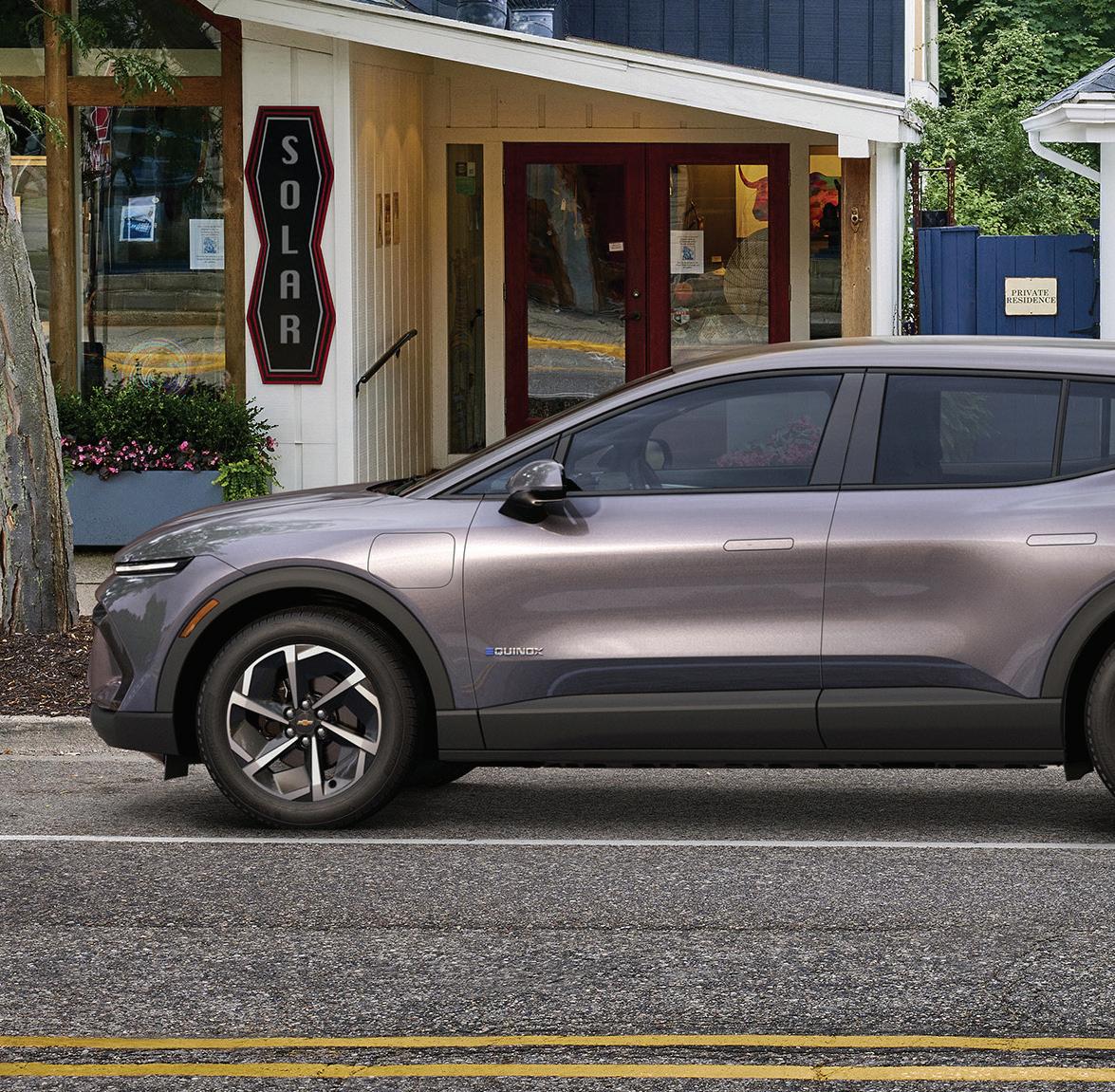






EV charging standards facilitator CharIN has introduced the Open Plug & Charge Network Communication (OPNC) Protocol, which is designed to elevate the Plug & Charge functionality of EV charging infrastructure. is API protocol enables supplier-agnostic Plug & Charge with Multi-V2G-PKI (Public Key Infrastructure) and Multi-MO-PKI (mobility operator) interoperability based on the ISO 15118 standard.
Plug & Charge is a system that enables public EV chargers to start charging automatically when an EV is plugged in, with no need for apps, RFID cards or other time-wasting obstacles (Tesla Superchargers have always worked this way). Once it becomes widespread, the public charging experience will be far more functional—but to date, Plug & Charge providers have not used a common protocol (nor have journalists used one standard spelling to describe it).
e CharIN OPNC Task Force has meticulously craed the OPNC protocol. It is basically an evolutionary extension for global use of the existing OPCP protocol, and is also compatible with the PNCP protocol. Characterized by an open and international framework, this aligned protocol is designed to ensure a frictionless and standardized charging experience for EV drivers by facilitating interoperability between the individual stakeholders and the PKI systems.
e OPNC protocol, which is now available online, can be considered as the next-generation API protocol globally, and features backward compatibility with existing protocols. CharIN OPNC Task Force members will now integrate the OPNC protocol into their existing EV charging infrastructures. Future developments of the OPNC protocol will include measures to increase its scalability and e ciency to enhance the interoperability of Multi-V2G-PKI ecosystems.

IoTecha wins $27-million grant for grid-friendly EV charging in California
V2G specialist IoTecha has been awarded a grant of up to $27 million by the California Energy Commission’s (CEC’s) Clean Transportation Program.
During Phase I of this initiative, IoTecha will deploy a network of 120 new EV smart charging stations at singleor multi-family homes. For Phase II, IoTecha intends to extend this network to 12,000 homes. In each phase, IoTecha will prioritize disadvantaged communities within utility territories where dynamic rates are available. is initiative will be enabled by IoTecha’s IoT.ON platform, a vertically integrated, modular and customizable smart charging platform that is currently powering thousands of EV chargers and generating billions of telemetry messages in Europe and North America. Cloud services provided by this platform support the latest versions of ISO/IEC 15118 and OCPP, which enable new features such as Plug & Charge and bidirectional V2G charging.
IoTecha says its platform can be implemented in various ways and with di erentiated feature sets, allowing partners to deploy products tailored to meet diverse market needs. It is interoperable with virtually all EVs, including light-duty vehicles, trucks and school buses.
“ e EV paradigm will shi thanks to VG1 and VG2, which ultimately enable EVs to serve as a source of power and grid stability,” said Oleg Logvinov, CEO of IoTecha. “A smart EV ecosystem based on open standards and strong cybersecurity protocols can help to generate value for California’s power grid for all communities.”





As regular Charged readers know, Toyota’s electri cation strategy blows hot and cold—in Q2 2024, its EV share of total US brand sales was abysmal—below 2%, lower than any other major automaker save fellow laggard Honda/ Acura. However, even as it continues to lobby against emissions standards and spread misinformation about EVs, the giant automaker is researching new battery and charging tech.
e latest welcome news is that Toyota has (a bit belatedly) joined seven other automakers as an investor in public charging network IONNA. Toyota and Lexus customers will now have access to the public network of DC fast chargers IONNA that plans to begin deploying later this year. IONNA hopes to install at least 30,000 charging ports in North America by 2030, and its stations will include both NACS and CCS connectors.
“We are excited to announce our support of IONNA to deploy DC fast chargers throughout the US and Canada,” said Ted Ogawa, President and CEO of Toyota Motor North America. “We believe this will not only promote the adoption of BEVs and increase customer con dence in the technology, but it will provide our Toyota and Lexus customers with access to IONNA’s rapidly growing charging network in North America.”
Toyota currently o ers two BEV models in the US and Canada—the Toyota bZ4X and the Lexus RZ. It recently announced plans to produce two new electric three-row SUVs in Kentucky and Indiana. By 2030, the company aspires to o er 30 BEV models globally (read: mostly in Europe and Asia).

Shell has deployed a self-developed megawatt charger for dual use by both electric trucks and waterborne vessels at the company’s Energy Transition Campus Amsterdam (ETCA), a facility where the oil giant demonstrates current energy technologies.
e charging station uses the Megawatt Charging System (MCS), a standard for charging heavy-duty EVs advanced by CharIN. MCS is theoretically capable of delivering up to 3.75 megawatts of power—Shell says its new charger delivers about one megawatt.
Shell’s new MCS charging station is equipped with two separate charging arms. One rotatable arm is dedicated to electric vessels, and the other serves electric trucks and buses. Each charging arm also includes a CCS2 plug. Shell says the charger is ready for use, and vehicles and vessels with megawatt charging capability can visit by appointment.
e megawatt charger is connected to ETCA’s microgrid, which demonstrates integration among energy supply, energy storage and energy demand. e ETCA microgrid includes 3,600 roo op solar panels, stationary battery storage, 119 EV chargers and a hydrogen electrolyzer.
“In addition to our investments in biofuels and LNG, we also invest in electric mobility. ere are not that many electric trucks and vessels yet, so with this we’re investing ahead of the market that is growing quickly,” says Hilmar van den Dool, GM eMobility at Shell.

FLO, a Canada-headquartered EV charging network and infrastructure supplier, has secured $136 million in longterm capital, principally from a Series E equity nancing led by Export Development Canada.
Other participants were Caisse de dépôt et placement du Québec; Investissement Québec; Business Development Bank of Canada; Energy Impact Partners; and MacKinnon, Bennett & Company.
e company’s largest funding round so far will support its expansion across North America as well as the rollout of the NEVI and Buy America-compliant FLO Ultra 320 kW charger and the next generation of FLO Home chargers.
“ is nancing will help FLO continue our work to deploy reliable, critically needed EV charging infrastructure across North America,” said Louis Tremblay, FLO President and CEO.

Daimler Buses has delivered an electric bus eet for the German transport company ESWE Verkehr in Wiesbaden and supplied a total of 120 battery-electric eCitaro buses since the start of the project in 2019.
Daimler Buses supervised all construction measures and oversaw the installation of a total of 120 charging stations. e company deployed charging management technology and oversaw the installation of an electrical substation for converting the current from medium to low voltage. e operator’s so ware system was also converted to operate an e-bus eet.
“ e transport company ESWE needed a complete solution, meaning both vehicles and charging facilities. We were able to support our customer and electrify the depot in Wiesbaden,” said Till Oberwörder, CEO of Daimler Buses.





Wallbox Chargers, a company that designs, manufactures and distributes EV charging systems, has announced a new addition to its Supernova DC fast charger product line.
e Supernova 220 has a maximum power output of 220 kW, and has a footprint of 3.48 square feet, leading company o cials to state that the 220 is “one of the highest power-to-footprint ratio chargers” on the market.
“Supernova 220 lls the current need for high-power charging sites, and is capable of providing 10- to 15-minute charging times for passenger EVs, as well as serving the high-power charging demands at private and public sites for eets, electric trucks, buses and heavy goods vehicles,” said Till Wilmschen, Director of DC Fast Charging at Wallbox.
e Supernova 220 is also DC meter law-compliant, which means it can legally operate at fast charging stations using higher power ranges thanks to its metering windows, which are prominently displayed below the touchscreen. It is also fully compliant with the latest Alternative Fuels Infrastructure Regulation (AFIR), without the need for any accessories, the company said.

e Biden Administration approved Electric Vehicle Infrastructure Deployment Plans (EVIDPs) for all 50 States, DC and Puerto Rico, in 2022 (ahead of schedule). To date, only 20 states have announced their awards. Are some states slow-walking (or completely ignoring) the process?
Well, that’s a topic for another article, but one thing is certain: charging network operator ChargePoint has been taking full advantage of the NEVI program. e company and its partners have been selected for awards at more than 125 sites, representing nearly 600 fast charging ports in 20 states and some $75 million in proposed grant funding.
Several of these sites are up and running—the latest to open for business are two sites along Interstate 95 in Rhode Island. According to ChargePoint, the Ocean State is the rst in the nation to complete Phase 1 of the NEVI program.
All of ChargePoint’s NEVI sites feature the ChargePoint Express Plus charging station. is is a modular DC fast charging platform capable of delivering power levels up to 500 kWh. Each Express Plus station can simultaneously charge two vehicles. Express Plus con gurations include cable options for both CCS and NACS (aka SAE J3400) connectors.
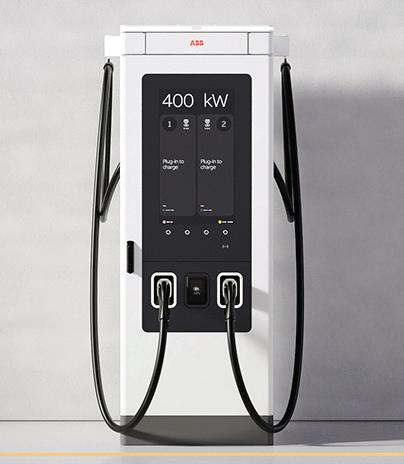
ABB E-mobility makes a wide range of EV charging stations and related products. With the announcement of its new A400 All-in-One charger, the company acknowledges the industry’s stubborn reliability problems, and introduces some features designed to deliver a more user-friendly charging experience.
“ e A400 has been developed with a consumer-centric design approach focused on achieving the highest charging success rates possible,” says ABB. “Its intuitive user interface is displayed on a large 32-inch screen, and the A400 is as easy and familiar to use as your smartphone. It guides the user step by step and con rms the charging status and completion of the charging process with the ambition of a 99% charging success rate.”
e A400 “is more than just a hardware product. It comes with 24/7 service-level agreements (SLAs) that target 99% charging success rates, as well as 97% uptime and fast service response times.”
ABB notes that many eets and owner/operators seem to focus on installing the highest-power chargers, and neglect the quality of the charging experience. “We need to nd a better balance between just installing more power on the one hand and more reliability and more power sharing on the other. at’s why ABB E-mobility designed the A400 with the aim of achieving a 10-year product lifetime, high reliability and, most importantly, enabling our customers to sell energy at the lowest cost.”
Two charging ports provide 200 kW of continuous charging power to two vehicles, or up to 400 kW for a single vehicle.
“ e A400 has been designed from the ground up as a system for the reliable and cost-e ective delivery of energy, enabling our customers to operate their network at the highest level, and achieving their desired economic outcome,” said Michael Halbherr, ABB E-mobility CEO.
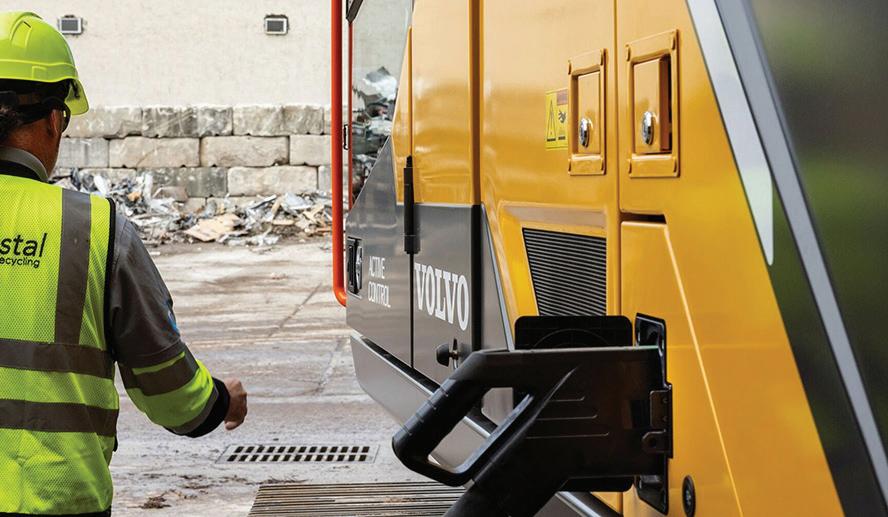
Volvo Construction Equipment (CE) and Volvo Penta have launched two new charging units in the North American market in collaboration with Utility Innovation Group (UIG) and Portable Electric.
e PU750 unit is developed and built by UIG is designed for fast charging of larger equipment onsite without needing a converter, while the PU130 developed with Portable Electric is a mobile Level 2 charger for compact machines.
e PU750 uses the Volvo Common Architecture, Shared Technology (CAST) strategy. e partnership applies Volvo Penta’s battery sub system to enable mid-size electric machines to charge on a variety of job sites.
e unit can support three or four mid-size machines like the Volvo EC230 Electric excavator through twin CCS1 connections.
e PU750 works with the interactive UIG power system to maximize available AC power and integrate on-site distributed energy assets. e PU750 also integrates solar panels to aid in controls and auxiliary system support when it is away from the grid.
e PU130 unit incorporates Portable Electric’s 48 V DC fast charging technology to provide a 20 kW charge rate. In addition to charging equipment, the PU130 can simultaneously provide 40 kW of job site power to support tools, lighting, o ce trailers and other equipment.
e PU130 connects to Portable Electric’s Neuron OS for remote monitoring and charging schedule optimization. e PU130 will be available through the North American Volvo dealer network later this year.
“Battery-electric equipment is not feasible for every jobsite or application, but its use cases continue to grow,” said Ray Gallant, Vice President of Sustainability and Productivity Services at Volvo CE. “As long as owners and operators are making an e ort to reduce emissions in whatever way they can, that is forward progress.”




Finland-headquartered EV charger manufacturer Kempower has opened a new factory in Durham, North Carolina.
e new facility will serve the US and Canadian markets. Kempower operates three European factories in Lahti, Finland, in addition to the new facility, which is expected to employ about 300 and has set a 2035 target for 100% carbon neutrality.
“Our new facility in Durham is a testament to our commitment to rapid and pro table growth, with a robust presence for today and beyond,” said CEO Tomi Ristimäki.
EV charging infrastructure provider ChargeTronix has introduced its new 480 kW Nexus Distributed Charger, designed to support commercial eets as they shi to electric trucking.

e Nexus Distributed Charger o ers up to 480 kW of available power and dynamic power sharing, allowing charging of up to six commercial vehicles simultaneously and enabling longer dwell times for multiple trucks during peak downtime periods.
“As the demand for electric trucks grows, acquiring an all-electric eet is only half of the equation for eet operators,” said Stephen Israel, Vice President of Operations at ChargeTronix. “Having charging infrastructure that provides dynamic power sharing in 40 kW power increments enables the operator to optimize charging to align with their duty cycle.”
Paired Power makes a solar-powered microgrid EV charger that can be used in grid-tied or o -grid applications. Now the company has introduced a new product called PairFleet, a larger, scalable version that’s aimed at EV eets of all sizes.
Getting adequate power to a site is o en a major bottleneck for EV charging station deployments. Paired Power’s suite of microgrid products addresses this problem by combining energy from a site’s existing grid with solar power and battery storage.
PairFleet is designed to reduce daily charging costs and provide supplemental backup power, without having to expand existing electrical service.
Each PairFleet installation is designed to meet the speci c requirements of the site, based on available grid capacity and a client’s energy and power needs for EV charging. Paired Power CEO Tom McCalmont told Charged that his company works closely with potential customers to assess their speci c needs before making a proposal.
PairFleet comes with a full-featured charging management system that enables users to manage energy usage in real time, get remote diagnostics, and more.
“We found that many of our customers required larger scale charging capacity, so we scaled up our PairTree microgrid into a system that can charge larger numbers of vehicles,” said Tom McCalmont. “Many customers are experiencing long delays for adding grid infrastructure from their utility for EV charging, and microgrids are a rapidly deployable solution to the problem.”
Paired Power has demonstrated its solar microgrid concept by successfully deploying PairTrees at multiple businesses, including Carr Vineyards and Winery, where the company’s system charges a Monarch electric tractor.
“ anks to Paired Power, we did something that no one else has ever done—we performed the rst-ever o -grid solar powered harvest in which we harvested eight tons of grapes with zero emissions,” said Ryan Carr, owner of Carr Vineyards.
Last January, Hertz delivered the equivalent of a public slap to Tesla, announcing that it would sell thousands of the Teslas it had bought two years previously. Comments from customers and employees indicated that the mutual PR nightmare was the result of poor planning on Hertz’s part—a particularly embarrassing failure, considering that the rental giant has been experimenting with EVs since 2011.
Hertz is not the only company that has blown a bundle by blundering blindly into electri cation. In 2023, competitor Sixt announced that it would phase out Teslas from its lineup, for the same reason that Hertz cited: poor resale values (an issue that any EV owner could have warned them about).

Like every eet operator, however, the company has no choice but to forge ahead with electri cation, and it appears to have grasped the importance of securing expert help with its charging infrastructure.
Sixt turned to electric eet management specialist Guided Energy, which has described some of the challenges it was able to address for the rental agency.
“Given di erent charging speeds, battery capacities, pickup times and available power, it became impossible to know which vehicle needed to be plugged in where and when,” Guided Energy writes in a blog post. “Getting this wrong keeps the EV in the parking lot for longer and delivers a bad customer experience.”
“With multiple charging hardware providers and external CPOs, charging data was recorded in siloes across di erent systems in very di erent formats, making it hard to track charging costs.”
Guided Energy implemented an all-in-one platform that consolidates data from EVs, chargers and external CPOs in one place, allowing Sixt to automate reporting on charging costs. Automated charge schedules ensure that each EV has enough power at the right time, using real-time data from EVs, chargers and the company’s reservations system.
“Guided Energy has signi cantly streamlined our recharging processes, saving us substantial time and e ort in managing electric vehicles,” said Marc Aubrée, Managing Director Sixt France. “ e platform consolidates all our EV-related operations, including costs, supervision and eet management. Our systems, vehicles and chargers are seamlessly interconnected. is integration simpli es EV management for operators, making it as straightforward as handling combustion vehicles.”




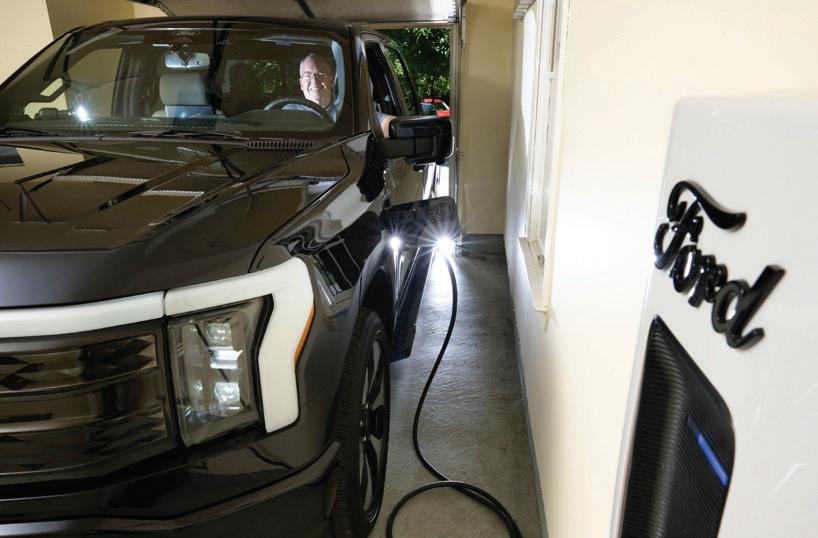
Sunrun, which o ers a “clean energy as a subscription” service, is piloting a vehicle-to-home power plant using a small group of customer-owned bidirectional EVs, in partnership with Baltimore Gas and Electric. e project uses Ford F-150 Lightning electric trucks to deliver power to owners’ homes during peak demand times to support Maryland’s power grid.
e program includes three Sunrun customers in BGE’s service territory who own F-150 Lightnings paired with Ford’s Charge Station Pro and Home Integration System, which is sold exclusively through Sunrun.
Sunrun is networking and monitoring the enrolled F-150 Lightning trucks as they share stored energy during dispatch windows between the hours of 5 and 9 pm on weekdays. Customers will receive payments based on the amount of energy shared.
“ is program is a signi cant proof of concept—no other market player has done this—and the goal is to expand these programs all around the country,” said Sunrun CEO Mary Powell. “ is partnership lays the foundation for the power grid of the future, which will enable EV owners to contribute to grid resiliency and utility price stability for everyone. e summer heat can be especially stressful on our power grid, which is why proving the use of stored energy in EVs for capacity is so important.”
In addition to demonstrating vehicle-to-home capabilities, the program’s goals also include learning the behaviors and preferences of electric vehicle owners. Based on insights gained, Sunrun and BGE plan to explore expanding the program, o ering incentives for existing F-150 Lightning owners to adopt bidirectional charging.
Emobi, an e-mobility roaming network provider, and Autocrypt, an automotive cybersecurity provider, have been working together since 2023 to develop a secure communication framework for EVs and charging stations based on ISO 15118-2 and ISO 15118-20 standards. e collaboration has focused on “building a robust Public Key Infrastructure (PKI) to address errors and data inconsistencies prevalent in traditional Plug & Charge systems.”
As Autocrypt explains, Plug & Charge enables EV drivers to start charging at any station simply by plugging in their vehicle. rough asymmetric encryption technology, the chargers automatically identify the EV and securely process the payment of the EV charging session. Autocrypt and Emobi’s Plug & Charge ecosystem is headquartered in the US, and complies with all US government regulations. It features an intelligent error-handling system.
Emobi has worked closely with the DOE’s Argonne National Laboratory to ensure that ndings from this project contribute to the National Charging Experience (ChargeX) Consortium.
“Security in EV charging infrastructure enhances openness while providing better control,” said Sean HJ Cho, President of Autocrypt North America. “By combining our PKI technology with Emobi’s expertise in AI and machine learning, we are bringing a secure yet innovative Plug & Charge solution to market, creating an unrestricted charging environment that ensures convenience, precision and security throughout the entire charging and payment processes.”
Lin Sun Fa, CEO of Emobi, added, “ e focus is to enable EV automakers, charger operators, and e-mobility service providers to continue building their products without being hindered by edge cases and constantly evolving standards. We are leveraging AI and Autocrypt’s PKI technology within the existing ISO 15118 standards, ensuring ease of implementation while improving charging infrastructure quality and security.”






By Charles Morris
o the average EV driver, charging may seem to be a mundane, even boring, matter. You plug your EV in when you get home, and when you’re ready to drive again, it’s charged. And that’s the way it should be. But there’s a lot of work going on behind the scenes to ensure that consumers have an uneventful charging experience, and it’s anything but boring.
Standards organizations have devoted tremendous amounts of e ort over the course of years to develop standards that meet the needs of automakers, EVSE manufacturers and consumers. And the work doesn’t end with the publication of a standard. Real-world testing is required on an ongoing basis to ensure that every EV will work seamlessly with every charging station.
Furthermore, EV charging infrastructure is a rapidly developing eld, and there are several potentially groundbreaking new technologies that are getting tantalizingly close to commercial implementation. Bidirectional charging, the Megawatt Charging System for heavy-duty EVs, the standardization of Tesla’s NACS charging connector, and new initiatives to improve the reliability of public chargers—all of these innovations will completely transform the charging scene for the better.
e Charging Interface Initiative North America (CharIN) is an organization that’s working diligently to bring all these new technologies, and more, to commercial reality. CharIN’s North America Charging Interoperability (NACI) Task Force is working to promote interoperability with NACS (or, as it’s now known, SAE J3400). CharIN also organizes an annual Testival where companies test the latest and greatest EV charging tech-
nologies. CharIN’s latest Testival and Conference, which took place in June, was attended by representatives of organizations across the charging industry, including automotive OEMs, EVSE hardware and so ware manufacturers, charge point operators, suppliers and integrators, as well as government and regulatory o cials, business trade groups, standards bodies and research rms.
Charged spoke with Erika Myers, Executive Director of CharIN North America.
Q Charged: CharIN is all about charging standards, but it isn’t o cially a standards body. Is that an accurate description?
A Erika Myers: We are not a standards development organization in the traditional sense. We are more of a trade group that helps create alignment within the EV industry, before, during and a er standards development and publication. We work closely with the standards development organizations like SAE, IEC, IEEE and ISO via our members, but we are not actually developing standards in the traditional sense.
Q Charged: You also have a testing function. You have your Testivals and your interoperability task force.
A Erika Myers: Exactly—testing is an important function of our organization. And we’re creating conformance tests as well to support the industry outside of our formal events. We have a conformance test that some labs internationally are using for CCS, and we’re in the process of extending the capabilities of that conformance testing into other areas, like ISO 15118.
Q Charged: Some months ago, I was surprised at how enthusiastically everybody jumped on the Tesla NACS bandwagon. CharIN was just about the only organization that was saying, “Wait a minute. Maybe we need to slow down and consider some things.” Now you are involved with testing interoperability for NACS. Has CharIN’s position on that evolved, or have your concerns been addressed?

A Erika Myers: In the past year, CharIN has been supporting industry development of SAE J3400 with the launch of the NACI Task Force. Last December the Technical Information Report was published, which is the precursor to the SAE J3400 standard, and CharIN members have been actively involved with the SAE J3400 Committee. e NACI Task Force currently has over 300 individuals who are contributing to the development of SAE J3400 and establishing market alignment. One challenge that we are trying to tackle is the safe use of adapters. CharIN has had a long-standing position that adapters are not an ideal solution for consumers, but recognizing that adapters will likely be used for some time, we want to get ahead of potential safety challenges of non-standardized adapters. So, CharIN released an adapter safety statement regarding J3400/J1772 adapters. e publication of the UL 2252 standard for adapters is expected soon.
Q Charged: I also found it unseemly that people were gleefully predicting the demise of CCS.
A Erika Myers: CharIN predicts that there will be many years of co-existence between CCS1 and J3400, and our plan is to continue to support both. CharIN has been
CharIN has had a long-standing position that adapters are not an ideal solution for consumers, but recognizes that adapters will likely be used for some time.
working collaboratively with all of our members to ensure that SAE J3400 is standardized and meets consumer needs for reliable and interoperable charging.
Q Charged: at leads into my next question. I happen to think that the Superchargers aren’t more reliable because they use a di erent connector, but because there’s one company making the cars and the chargers, and running the network, and that’s no longer the case now that other automakers and other charging networks are getting involved. Is this transition going to result in better reliability, or are there some challenges there?





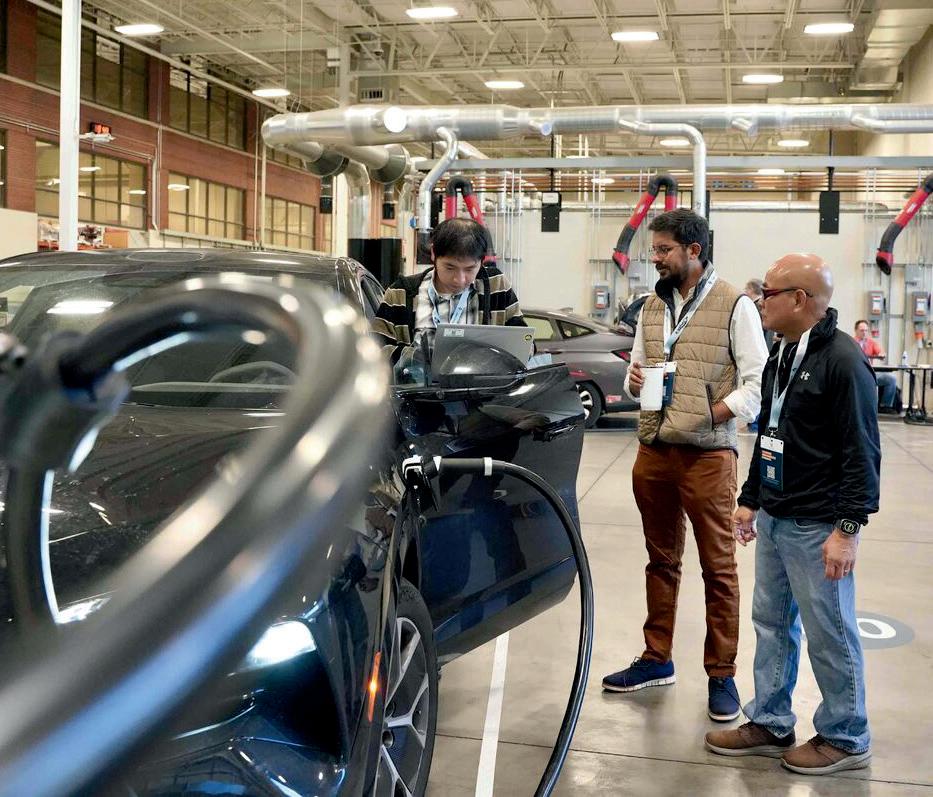
A Erika Myers: Interoperability is, of course, a big part of what CharIN focuses on, which is why we introduced SAE J3400 for the rst time at our 2023 Testival and again at our June 2024 Testival. Multiple manufacturers have tested their pre-production SAE J3400 equipment, and testers were pleased with the results.
CharIN works diligently with the industry to fix problems related to interoperability and standards conformance. CharIN's goal is to make sure that every vehicle works with every charger.
Q Charged: I ask everybody this question, and I get a lot of di erent answers. Why is it so hard to keep those doggone public chargers working?
A Erika Myers: CharIN works diligently with the industry to x problems related to interoperability and standards conformance. CharIN's goal is to make sure that every vehicle works with every charger.
CharIN is a member of ChargeX [the National Charging Experience Consortium, a collaboration among DOE national labs, EV charging industry players and consumer advocates], which recently published common error codes research. Industry e orts to implement things like common error codes will make it easier to address
and quickly x problems in eld, ideally remotely, so you don’t have to do a truck roll.
Q Charged: Tell me some more about MCS, the Megawatt Charging System.
A Erika Myers: CharIN’s MCS Task Force initially de ned the speci cation to support the next generation of on- and o -road DC fast charging up to 4.5 MW. CharIN members continue to support the MCS standardization activities through three parallel standardization processes.
We saw many demo models of MCS vehicles and chargers at the 2024 ACT Expo in May—especially among Class 7 and 8 trucks and charging depots servicing these vehicles. For example, Terawatt and WattEV, two CharIN members, have announced plans to incorporate MCS into their charging hubs once the standards are nalized.
We are also excited about o -road industry interest in MCS applications, including for the marine industry. We have hosted a series of workshops in Long Beach, California and Amsterdam, as well as virtual workshops to continue to raise awareness of MCS in the marine industry. We have upcoming workshops in September and November.
Q Charged: Is bidirectional charging supported through CCS, MCS, or both?
A Erika Myers: CCS, through ISO 15118-20, is capable of providing bidirectional capabilities for charging equipment. ere are still some technical details that need to be gured out, like integrating grid codes, but the CharIN community is interested and invested in solving some of those challenges.
Q Charged: What are your thoughts on V2G applications in general? Is that a game-changer, niche application, neither, or both?
A Erika Myers: CharIN absolutely thinks there’s some opportunity for vehicle-to-grid integration. We have had a grid integration focus group for many years that’s



We are also excited about off-road industry interest in MCS applications, including for the marine industry. We have hosted a series of workshops... to raise awareness of MCS in the marine industry.
addressing what might be needed in the standard. Combining green energy with green mobility is part of CharIN’s mission and our vision, so we absolutely are invested in making sure that the electrons used by our EVs are as clean as possible, and the best way to do that is to marry it with renewable energy generation, and allow




As highlighted at CharIN North America’s 2024 conference, we’re seeing commercial-scale V2G deployments happening in Europe already, but we’re still in the demonstration phase for projects here in North America.


vehicles to become an alternative to stationary storage. If we could leverage the battery that’s already in the vehicle, then that’s potentially making the vehicle a more cost-e ective grid asset, because it’s already used for other purposes and therefore may be able to do the same things for less. Also, it could be used by consumers as a way to help reduce the timeline for paying o the car to actually become—especially in the case of eets—a revenue source as opposed to a cost center. We think these are great opportunities for a win-win, both for the consumer and the energy industry.
Q Charged: Are you starting to see any commercial projects with V2G, or is everything still in the pilot stage at this point?
A Erika Myers: As highlighted at CharIN North America’s 2024 conference, we’re seeing commercial-scale V2G deployments happening in Europe already, but we’re still in the demonstration phase for projects here in North America.
I think there’s more opportunity with electric school buses, so that’s something that we’re watching closely. A lot of utilities have started to introduce more electric school bus programs, and almost all the electric school buses today are bidirectionally capable, and are o ering that as an option to their customers. e World Resources Institute has an electric school bus initiative, and signi cant research is being devoted to vehicle integration, using school buses as a resiliency tool for local communities [for disaster relief, etc].
Q Charged: What else can you tell us about new initiatives on the utility front?
A Erika Myers: I worked for many years with electric utilities on topics related to time-of-use rates, demand charge management, managed charging, all forms of vehicle-to-grid integration, and also distribution planning for EVs, so a lot of my background is on the utility side of things.
It’s exciting to see electric utilities exploring di erent opportunities with demand response and demand-side management programs for EVs, and I’ve been paying close attention to what the Peak Load Management Alliance has been doing. PLMA hosted their rst managed charging conference last fall, and that, to me, is a big

signal that utilities are making major investments and prioritizing this as an opportunity. Managed charging is a great precursor to more advanced versions of vehicleto-grid integration, and being able to manage at the customer site requires quite a bit of communications and aggregation that CharIN is here to support.
Q Charged: ere are so many utilities in the US, and some seem to be really hip to vehicle electri cation, while others are behind the curve.
A Erika Myers: Much of that perception has to do with where the EVs are distributed. ere are 3,300 electric utilities in the United States, and EVs aren’t being sold uniformly across the country. We know that a lot of utilities are very interested in how EV sales will evolve within their consumer base, because obviously they have to get ahead of these deployments to manage power demand.
Even at a local level, we’re starting to see utilities making statements that they’re concerned about the number of pole-mounted transformers that they must replace, as certain neighborhoods have higher EV penetration. ese are unexpected costs, and there are long lead times in purchasing transformers and substation equipment due to high industry demand.
Q Charged: What do I say to somebody that says, “EVs are going to crash the grid—there’s not enough power?”
A Erika Myers: I would point to all the studies done by the Electric Power Research Institute and the Edison Electric Institute, that have shown the opposite, and that there is ample generation available. Electric utilities have consistently met the demands of customers over their 100-plus-year history. I think where we have some challenges is not just generation—it’s making sure that it’s clean generation, so when we deploy a cleaner technology, it’s being fueled by other cleaner technologies. is is where it gets challenging from a utility perspective—you have to align those charging times with peak solar or peak wind, and maybe get the consumer to modify charging behavior accordingly. I’m part of a managed charging program with my local utility, Dominion Energy, and they give me $40 a year to modulate my charging times. I have a smart charger that can be accessed by my utility, and they can potentially turn

Managed charging is a great precursor to more advanced versions of vehicle-to-grid integration, and being able to manage at the customer site requires quite a bit of communications and aggregation that CharIN is here to support.
o a charge during a peak event or align charging with peak solar or peak wind. I don’t notice any disruptions in charging, and I get paid.
Q Charged: at sounds like an argument for having a smart charger instead of just a plain old non-networked charger.
A Erika Myers: I think this is a great example of how the automotive industry and electric utilities could


partner well together, because a lot of automakers will sell a particular charger along with the car at the point of sale, and if they were able to work with the electric utility to introduce a smart version of that charger, then it could get automatically enrolled into these kinds of programs that bene t the consumer.
We’re also starting to see some automakers address this within their own apps. If you type in your zip code, they’ll connect you automatically to a time-of-use program so you can save even more money on your utility bill. ere are really creative opportunities that organizations, like CharIN, can support through communication protocols like ISO 15118. Both 15118-2 and 15118-20 o er smart charging capabilities and another way to build consumer-friendly features into the next generation of electric vehicles.


By Charles Morris



Irdeto administers cryptographic keys and certifi cates to keep communications between EVs and charging systems secure.






Execs and experts across the EV infrastructure ecosystem agree on the importance of connectivity. Connecting EV charging stations to the cloud helps companies maintain reliability, provides valuable usage statistics, and enables cutting-edge features such as roaming, Plug & Charge and V2X applications. However, connectivity also means opportunity for hackers, crackers and other online evil-doers.
EV chargers are as vulnerable to cyber-threats any other connected devices—maybe even more so, for a couple of reasons. For one, EV infrastructure represents a new technology, and industry standards and best practices are still being worked out. Companies are entering (and exiting) the business on seemingly a daily basis—a sort of Wild West ethos still prevails.
Furthermore, some EVSE installations, especially in the public charging realm, involve a complex web of di erent companies and organizations, and by no means all of these are as security-conscious as they should be.
Irdeto has been a major player in the cybersecurity realm for many years, and has recently established an important role in the EV infrastructure ecosystem—its customers include vehicle OEMs, charge point operators and other e-mobility providers. Irdeto is a key player in managing the Vehicle-to-Grid (V2G) root Certi cate Authority (CA) in North America, and recently expanded its in uence by taking on the CharIN public key infrastructure in Europe.
Charged spoke with Irdeto’s Niels Haverkorn, Senior Vice President of New Markets, and Juha Hytönen, Senior Director, Electric Vehicles.
Q Charged: Irdeto specializes in cryptographic keys and certi cates for communication security. Is that something like the certi cates we’re used to seeing on web sites?
A Juha Hytönen: e solution is much more than just certi cates. We like to talk about key lifecycle management, which is an all-encompassing topic that deals with the issuance of secure material from creation all the way to revocation and renewal. e public key infrastructure (PKI) is in many ways analogous to the certi cate that you see in a web
The state of play today is that not all charging sessions are cyber-secure. The communication between the vehicle and the charge point, for example, may still be in plain text in some cases.
browser. Of course, in the context of EV charging, the certi cate itself carries information that is speci c to the domain—for example, charging contract information, identity of the vehicle, etc.
Q Charged: So, the certi cate includes the information that the car and the charging station need in order to deliver and pay for a charge, and it includes all that information in a secure format.
A Juha Hytönen: Correct. A secure format that is based on asymmetric key cryptography.
Niels Haverkorn: PKI technology is based on a public key and a private key—which is why they call it asymmetric—and then a certi cate infrastructure behind it that allows for authentication and security.
Q Charged: Your company provides PKI for a lot of di erent elds. How long have you been in the EV charging realm?
A Niels Haverkorn: We go back a long, long time in PKI, and we are one of the world’s largest players in the field. We have been in existence since 1969. Our initial business, and still one of our key focal points, is the video entertainment space, where public key infrastructure in a hostile domain is one of our key deliverables.
A Juha Hytönen: We had a number of customers in the automotive domain starting in 2019, including Ford Otosan (the truck manufacturing side of Ford) and Knorr-Bremse (a manufacturer of brakes and other things). ese engagements led us into discus-
sions with entities in the automotive space who are of course also active in the EV charging space. at’s how we became familiar with CharIN—our rst engagement in the EV space was actually with CharIN, in 2021, when we became the PKI provider for CharIN’s European V2G root.
Q Charged: Your web site lists three di erent types of customers: vehicle OEMs, charge point providers and e-mobility service providers. Tell me about the di erent needs of these kinds of companies as far as the security certi cates.
A Juha Hytönen: ere are lot of use cases, but for a charging session these three entities need to talk to one another, and they need to do it in a secure way. And the state of play today is that not all charging sessions are cyber-secure. e communication between the vehicle and the charge point, for example, may still be in plain text in some cases.
e cybersecurity of the charge points themselves is also an issue. It can be that the same set of keys is used for an entire network of charge points, which means that if you are able to get hold of that key, then you are suddenly in control of all the charge points. is was understood by the industry and that’s why they started developing standards like ISO 15118 and OCPP 2.0.1. In all these standards, the underpinning security technology is PKI.
For example, a charge point and a vehicle need to be able to trust one another even though they belong to di erent companies. e PKI is a mechanism that enables this fundamental trust. e certi cate is essentially a piece of text that ends up in the charge point, and when the plug is connected to the charge point, then it’s the public key and the certi cate that gets sent from the charge point to the vehicle. And with that, all of these entities are able to verify that the charge point is who they claim to be and that the vehicle is who they claim to be, and they’re able to use that same information to encrypt the communications between them. Our role here is to play the very topmost entity, and in some cases also that of a Tier 1 issuer, to make sure that those veri cations can pass, and that these companies actually follow the necessary security requirements—for example, to keep their private keys safe.
If you’re able to take control over charge points, and you can suddenly stop or start the charging sessions of 100,000 vehicles in the city of Seattle, for example, then that is going to create such a huge spike on the electricity grid that the grid is most likely going to go down.
Q Charged: Tell me a couple of horror stories. If a charger sent information in plain text, without encryption, what could happen?
A Niels Haverkorn: One of the simplest ones could be that, instead of a CPO giving notice to your vehicle that a charging session is done, it’s a hacker on the side of the road who says, “I have just charged this car for $50, here is the bill.” at’s something simple that can go wrong. But of course, there’s lots of personal data in vehicles and in charging contracts.
A Juha Hytönen: e impacts may not be that large if a few people are able to charge for free or if the charging session doesn’t happen. But I think that the main sort of horror scenarios, there are two. e rst one impacts the business of these companies. If your communications are unencrypted and you have these open doors into your infrastructure, whether it’s the charge points or the vehicles, then this makes you susceptible to a very basic type of attack, such as ransomware. at’s something that we have seen happening in many industries, and if this is not xed, then it’s also going to happen in charging infrastructure.
en there is another scenario, which is that if you’re actually able to take control over charge points, and you can suddenly stop or start the charging sessions




of 100,000 vehicles in the city of Seattle, for example, then that is going to create such a huge spike on the electricity grid that the grid is most likely going to go down, and then you have a problem.
Q Charged: And a great plot for a disaster movie.
A Juha Hytönen: Absolutely!
Q Charged: Tell me more about ISO 15118.
A Juha Hytönen: ISO 15118 is a series of standards that governs the interface between the vehicle and the charge point. And the two speci c parts that we are interested in are parts 2 and 20, which govern the communication interface.
Q Charged: ese standards enable things like roaming, Plug & Charge and V2G. Is it fair to say that roaming is fairly well established, but Plug & Charge and V2G are new up-and-coming technologies?
A Niels Haverkorn: Roaming is available today, but it’s actually not free roaming in the sense of being standardized. It requires a third party that aggregates services and signs on companies. With that comes, of course, cost ine ciencies, monopolies, etc. It’s not true free roaming as we would have, for example, in a standardized cellular network. And that is where Plug & Charge capability comes in. So, this neutrality and industry-wide setup is what we’re also doing in taking on, for example, the business from CharIN, where we want to make sure that our customers have a say in how policies are set.
Q Charged: Hubject is an example of one of those aggregators—as I understand it, it’s kind of a closed system that’s only open to the companies that participate. Your goal is to have an open roaming system that anyone can participate in, based on open standards. Would that put companies like Hubject out of business?
A Juha Hytönen: Well, I think it would signi cantly reduce their business. Hubject has done a lot of good

groundbreaking work in the sense that they enabled roaming in the rst place, so you have to give them that. And they have certainly xed some of the early issues in the industry. However, they are not based on open standards at the moment.
Also, Hubject is not solving the entire problem. e problems that they are trying to solve are interoperability and roaming. We are trying to solve the cybersecurity problem, of which interoperability is just one aspect, and our aim is to do that in an open manner. One of the key di erences between us and some of the other industry players is that we have an open governance model, meaning that for our ecosystem, we will have an external governance board, comprised of representatives of customers, that has the nal say in how that ecosystem is governed. Also that, insofar as available, we will base our technology on open standards such as ISO 15118, OCPP, Open Plug & Charge Protocol, and others.
Q Charged: Of course, Tesla has its own proprietary system that does basically the same thing as Plug & Charge, and there’s another system called AutoCharge. Can those all coexist and work together?
A Juha Hytönen: Tesla’s system is also based on the ISO 15118-2 standard. e communication protocol is the same, it is just the connector that is di erent. eir connector is the NACS connector, whereas others, especially in Europe, prefer the CCS connector, which is de ned in the ISO standard as well. e Tesla infrastructure also relies on a public key infrastructure, so some of the fundamental building blocks are the same.
AutoCharge, however, is something totally different. AutoCharge was developed to address one very narrow use case, which is a seamless charging session, and it comes with some limitations. It doesn’t work on all vehicle models because there is no native support from the vehicle manufacturers. It is a very clever technology, and as an EV driver, I think it’s great they came up with AutoCharge because it showcases how simple charging an EV can be, and it has proven the potential for Plug & Charge. However, what AutoCharge doesn’t provide is the security foundation. I do think that there is a place for AutoCharge for a few years until ISO 15118 is fully deployed, but think that eventually Plug & Charge is going to replace it as the primary use case.
Q Charged: I’ve heard that a lot of the back-end stu —security and so on—with Tesla’s system is not very di erent from the CCS system. Will the Tesla and Plug & Charge systems merge, or will they continue to coexist?
A Juha Hytönen: ere will certainly be some kind of an interoperability arrangement. And since they are both based on the same foundational technology, it is not as big a problem as people may think.
Q Charged: On your web site you list OEMs, CPOs and e-mobility service providers as your customers. Would eet operators also be potential customers?
A Juha Hytönen: Yeah, they would. If we look at the deployment of the ISO 15118-based technology, then it seems that the first adopters will actually be fleets. A lot of the concrete customer cases that we are talking about have to do with an OEM and a CPO providing a private charging experience for a fleet
Tesla’s system is also based on the ISO 15118-2 standard. The communication protocol is the same, it is just the connector that is different. AutoCharge, however, is something totally different.
operator. The use case is that the CPO will install charging infrastructure at a depot, for example, and then the OEM will sell fleet vehicles that are able to use Plug & Charge at that particular depot and enable a seamless charging transaction. There’s also talk about V2G, because the potential for V2G is of course much larger in fleet environments where you have a number of EVs co-located.
Q Charged: Where does your company t into the overall charging ecosystem? You provide the security piece of the puzzle. Do you have competitors that provide similar services, or do some of the EVSE providers o er the same sort of services?
A Juha Hytönen: We are an independent trust platform provider in the sense that we are one of the few players in this space who are independent of all the CPOs and all the OEMs. When our customers choose to work with us, they are not funding the technology of their competition, and they see us as a neutral entity. at’s one thing.
e second thing is that we provide a full end-toend solution. We talked previously about the roaming hubs—they are de nitely one group of competition that we have. en we have the traditional PKI providers. To give an example, DigiCert is a big name, especially in the US market. eir background is in the internet space, where they are a well-known provider of certi cates. But in comparison to those kinds of operators, we are a true end-to-end service provider in the sense that we provide all the services for key




lifecycle management, from getting that key from when it’s generated to the manufacturing line of that charging station to provisioning it for the rst time, to the creation of a contract certi cate and getting that into a contract certi cate pool, which is a public service where anybody can nd that. And as far as we know at the moment, this kind of full service does not exist with any of our competitors.
The fact that we are a neutral outsider is a key element here. We are not a CPO, we’re not an EV company, and we don’t have those investors in our company. That creates neutrality, which is important for these types of systems to go broader. And this is also why us starting to take over the PKI infrastructure from CharIN is significant. That open governance, where the market and customers have a say in PKI policy and deployment, is a key element. Because it has to be neutral and trusted by the entire industry and all the players.

Q Charged: Tell us more about your takeover of the public key structure from CharIN. Is this just for Europe?
A Juha Hytönen: We are going to take over the CharIN PKI, and it was only launched in Europe. We have our own operation in North America, which we launched late last year. e challenge that CharIN had was the operational e ort to run a PKI where the participants are Fortune 500 companies with quite high requirements for cybersecurity process compliance. It was maybe a bit too much for an association, whereas that has been our bread and butter for decades and it is something where we really have developed quite an operational excellence.
A Niels Haverkorn: at initial PKI of CharIN was actually developed in cooperation with us as well, so we’ve been working closely together over those years. e idea was for CharIN to manage and operate this key lifecycle management system. And clearly the operational requirements of doing so is our specialty. Of course, what we want to maintain is this element of neutrality that CharIN very much had.
The fact that we are a neutral outsider is a key element here. We are not a CPO, we’re not an EV company, and we don’t have those investors in our company. That creates neutrality, which is important for these types of systems to go broader.
Q Charged: I suppose that opens up some new opportunities for you as a company. What’s next for the PKI project?
A Juha Hytönen: Yeah, it is a huge opportunity. is will be one of the most important global platforms going forward—we hope that we will have most of world’s EV drivers on our platform in one way or another. at’s a huge opportunity for us as and of course to the competitors who will eventually follow, as there will be a few of these platforms for sure.










































By Charles Morris
To anyone who follows the EV news, this is a familiar story: e rst wave of EV buyers were tech-savvy suburbanites, and for them, installing home charging is easy. However, millions of urban dwellers around the world not only have no driveways, but no assigned parking spaces, and must depend on on-street parking. What, o what will they do? [wrings hands]
A couple of years ago, EV journalists, including this one, tended to see this as a major dilemma, with no viable solution in sight. However, a er visiting some of the most EVsavvy cities in Europe, I’m convinced that the solution has been under our noses all along: simply install lots and lots of on-street curbside chargers.
In Oslo and Amsterdam, compact curbside chargers line many residential streets. Oslo is also on a crusade to eliminate most street parking from the city center, forcing cars into parking garages, which are also liberally supplied with chargers. For the past few years, London has been a laboratory for urban charging solutions. When I visited this July, I saw curbside chargers, many cleverly ensconced in lampposts, everywhere. Not coincidentally, I also saw loads of EVs.
As usual, the US is a few years behind the curve, but that could be about to change. A company called itselectric is piloting its own curbside charger in New York, and recently closed a $6.5-million funding round, which will nance deployments across seven US cities later this year.
What exactly distinguishes curbside charging from plain old public Level 2 chargers (which may also be located at curbs)? Well, for one thing, as itselectric co-founder and CEO Nathan King explained to me, curbside chargers are located in the public right-of-way, so charge point operators must make deals with local governments. Although CPOs must maintain the chargers themselves, the city is responsible for maintaining the parking spaces, which can simplify matters by taking site owners out of the equation.
Curbside installations can sometimes take advantage of existing power sources, avoiding the long delays typically involved in getting a utility to provide new service. itselectric contracts with property owners who have excess power capacity. London’s lamppost chargers tap into existing circuits that serve street lighting (which o en have excess capacity thanks to the recent shi to LED lighting). Some of Oslo’s charge points can tap into circuits that were installed to power engine heaters, which are popular in northern climates.
For a curbside charging project to o er a true solution for the unfortunate Drivewayless masses, it needs to follow certain best practices. First, the chargers need to be simple and compact. is rules out some of the Rube Goldberg concepts we’ve seen in London, like retractable chargers

with lots of moving parts. It also means that the standard American-style public charger, with a lengthy cable attached, isn’t going to work.
Almost all chargers in the US come with built-in cables, and while these may be ne for our sprawling suburban parking lots, they aren’t suitable for on-street urban chargers. e last thing cities want is more sidewalk clutter and things for people to trip over. In Europe, most public AC chargers lack attached cables—drivers provide their own. itselectric has adopted this design, which, as King explained, is superior for several reasons. Not only does it make for a neater installation, it eliminates vandalism, copper the and downtime caused by broken cables. It also eliminates the need for adapters—in fact it completely sidesteps the issue of di erent connector formats. US charging networks are now in the process of adding NACS (SAE J3400) connectors to their chargers, at great expense. European CPOs don’t need to do that. itselectric customers can choose whether to receive a J1772 cable, an NACS cable, or both. If some other connector comes into style in the future, the company won’t have to do a thing to its chargers—it can simply send its customers new cables.
Curbside chargers are the wave of the future, but they aren’t the only solution for urban EV drivers. More workplace and destination charging would help, and some drivers may be able to get by with a low-tech solution. e West Berkshire Council in the UK recently began installing conduits under sidewalks on request, enabling residents to plug their EVs into their home power, sans clutter or tripping hazards, and British EV fans hope other municipal authorities will soon follow.
It’s only fair to point out that curbside charging is never going to be as desirable as having your own charger in your own driveway. Curbside chargers are subject to some of the same reliability problems that plague all public charging, and public charging is always going to cost substantially more than charging at home (itselectric is committed to keeping its cost below that of highway fast charging). But as long as we’re being fair, let’s point out that parking any car on the street is going to be a hassle compared to parking it in your own nice cozy driveway—regardless of whether it runs on electrons, dinosaur juice or unicorn tears.






